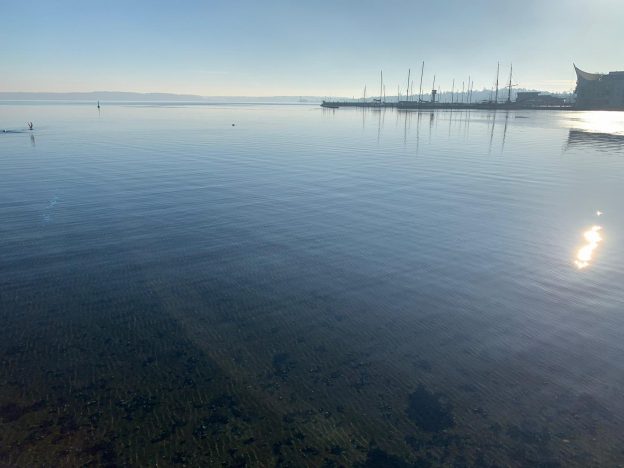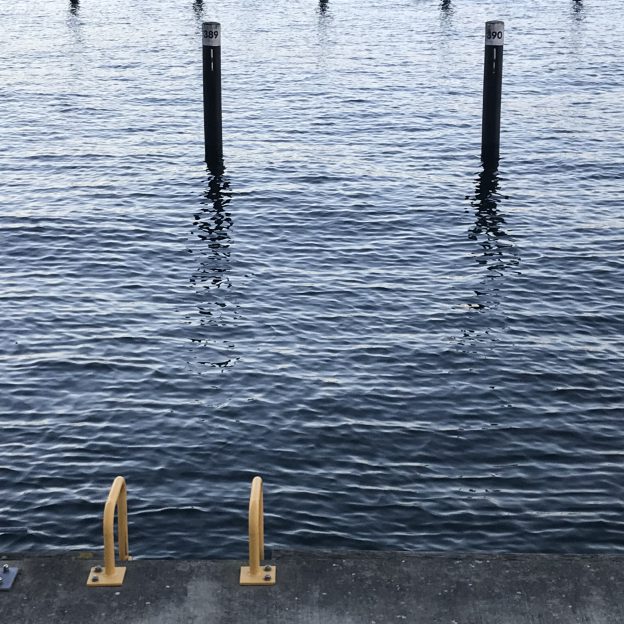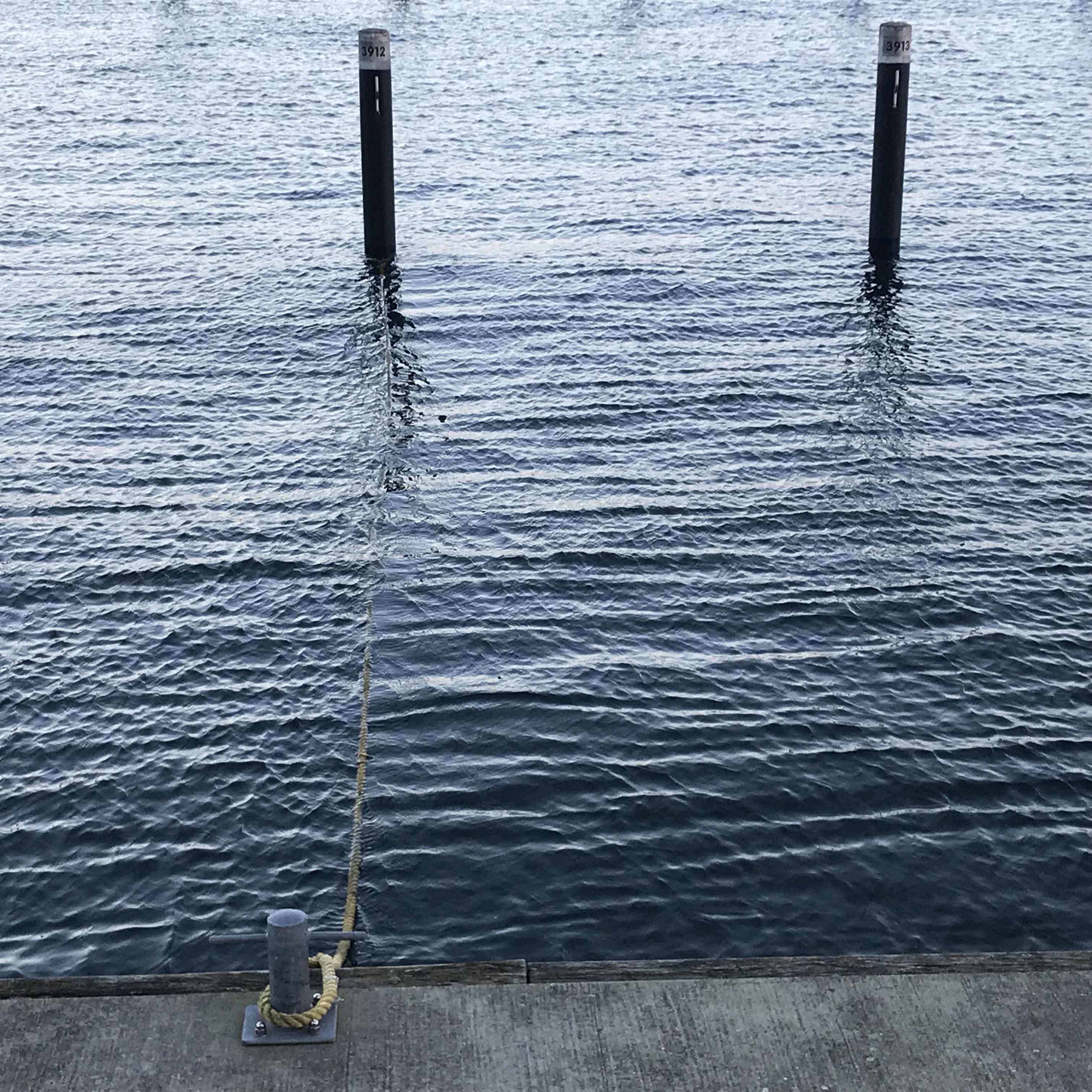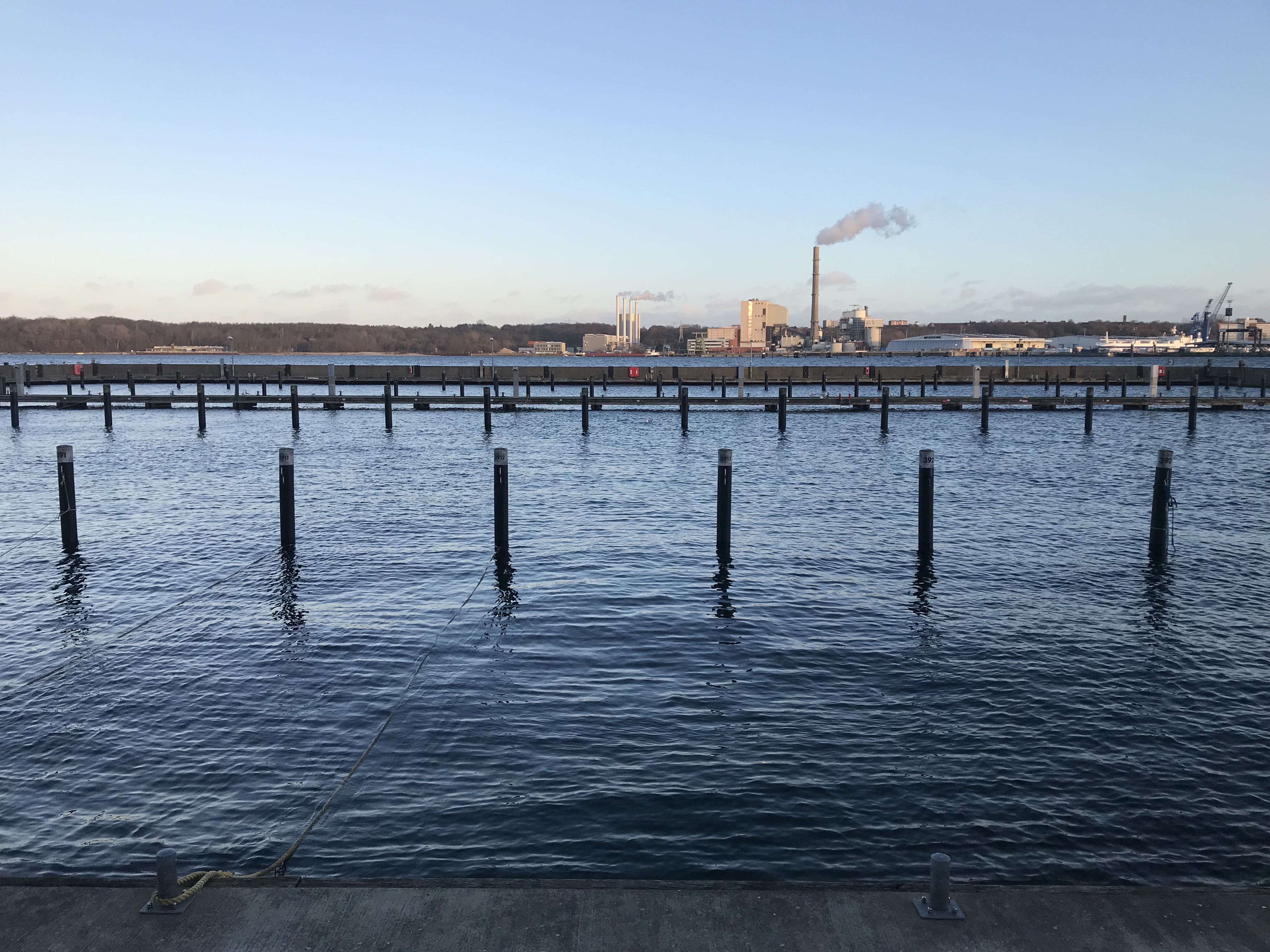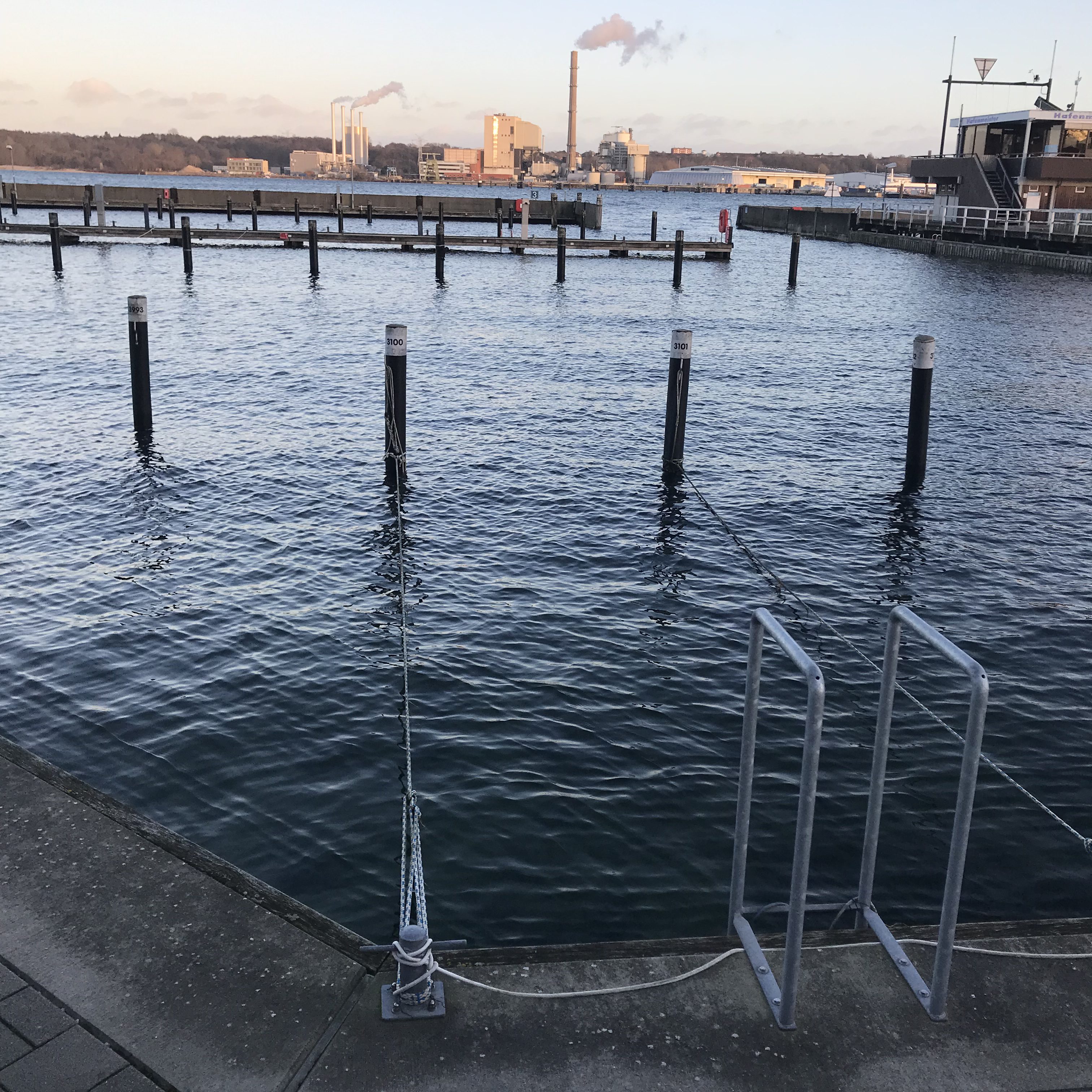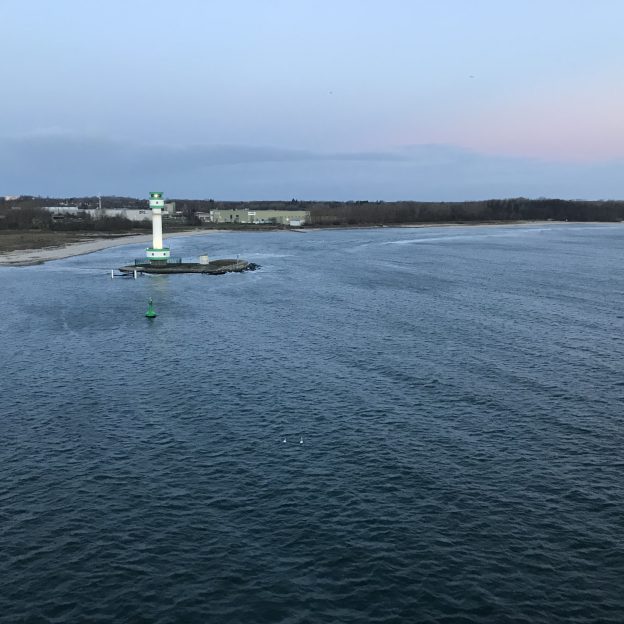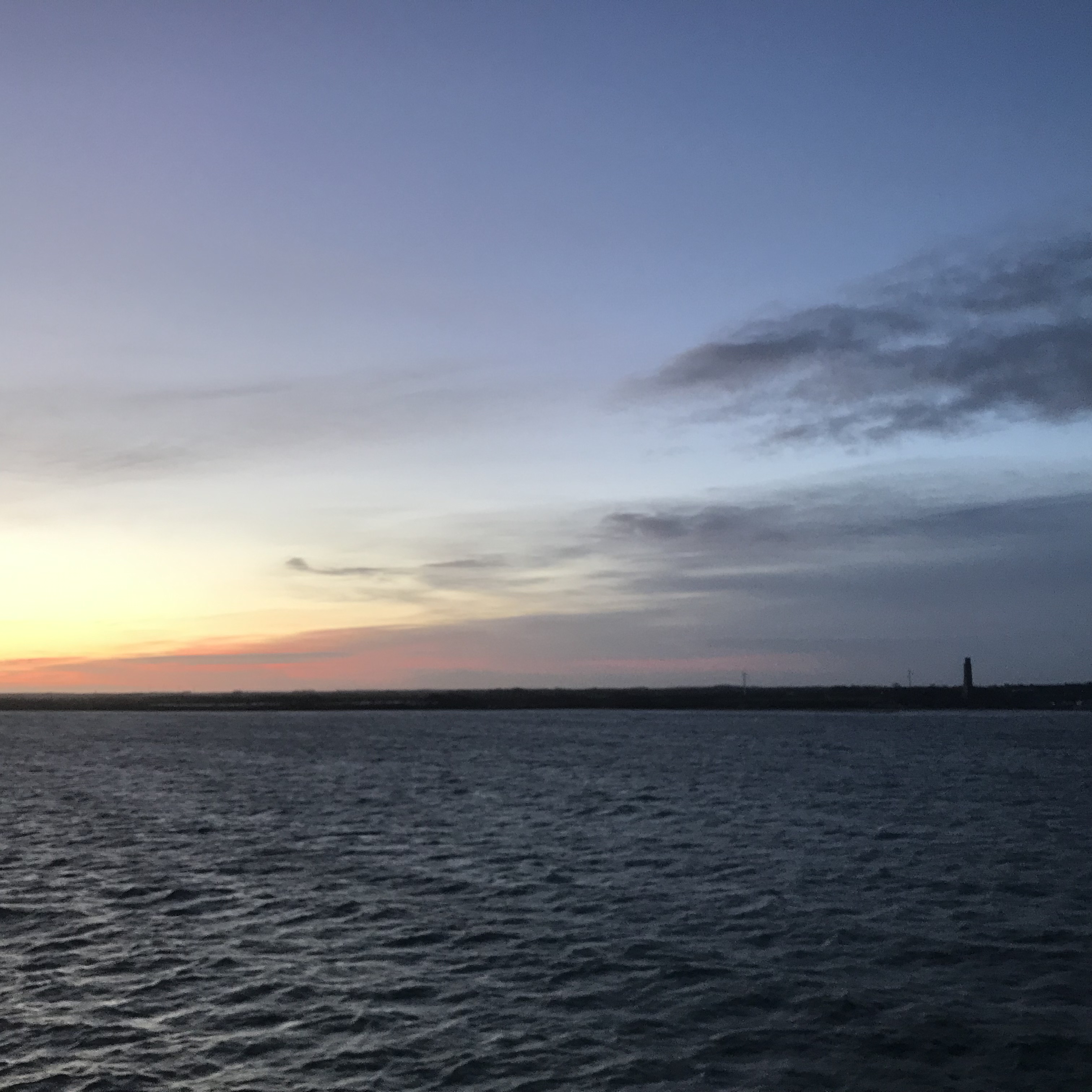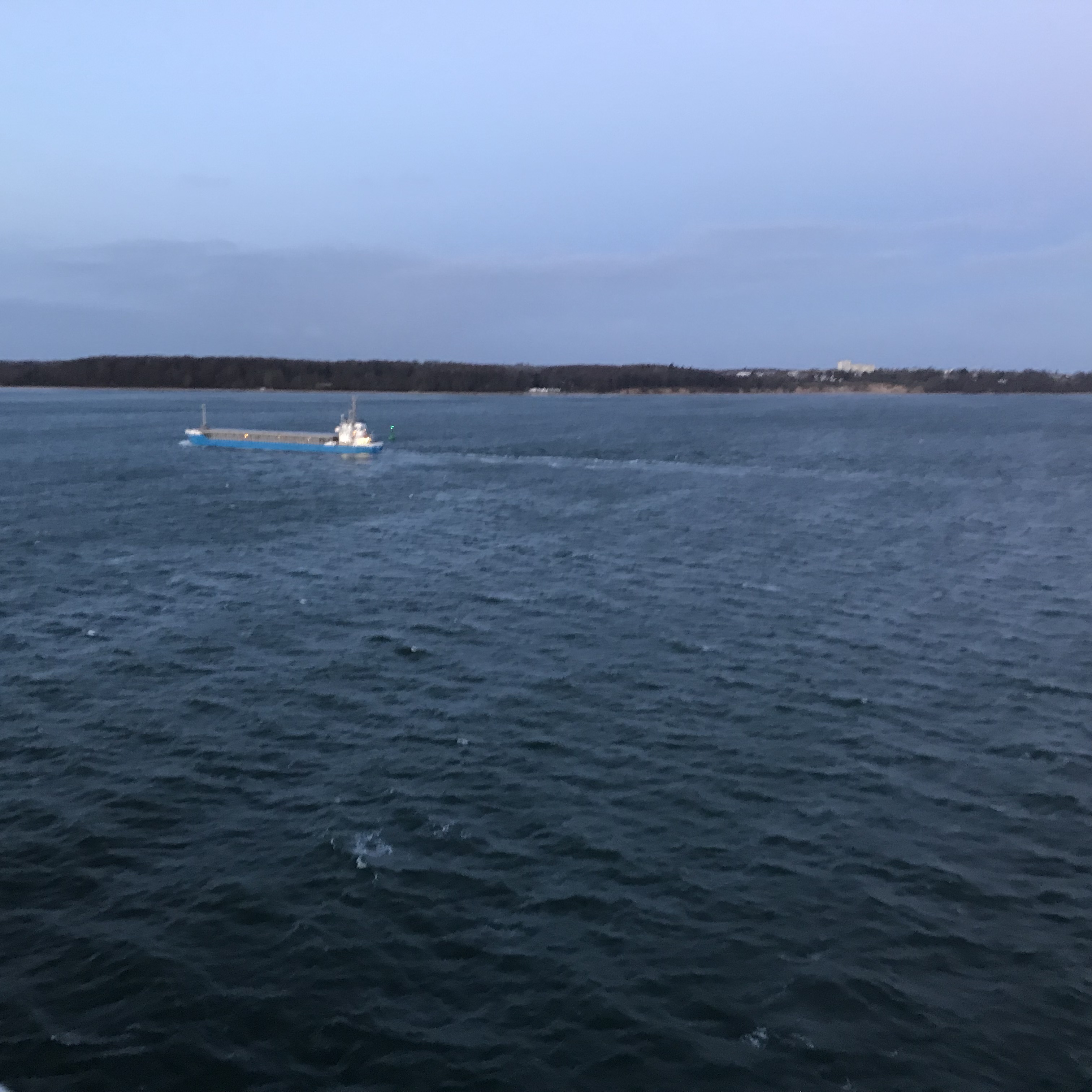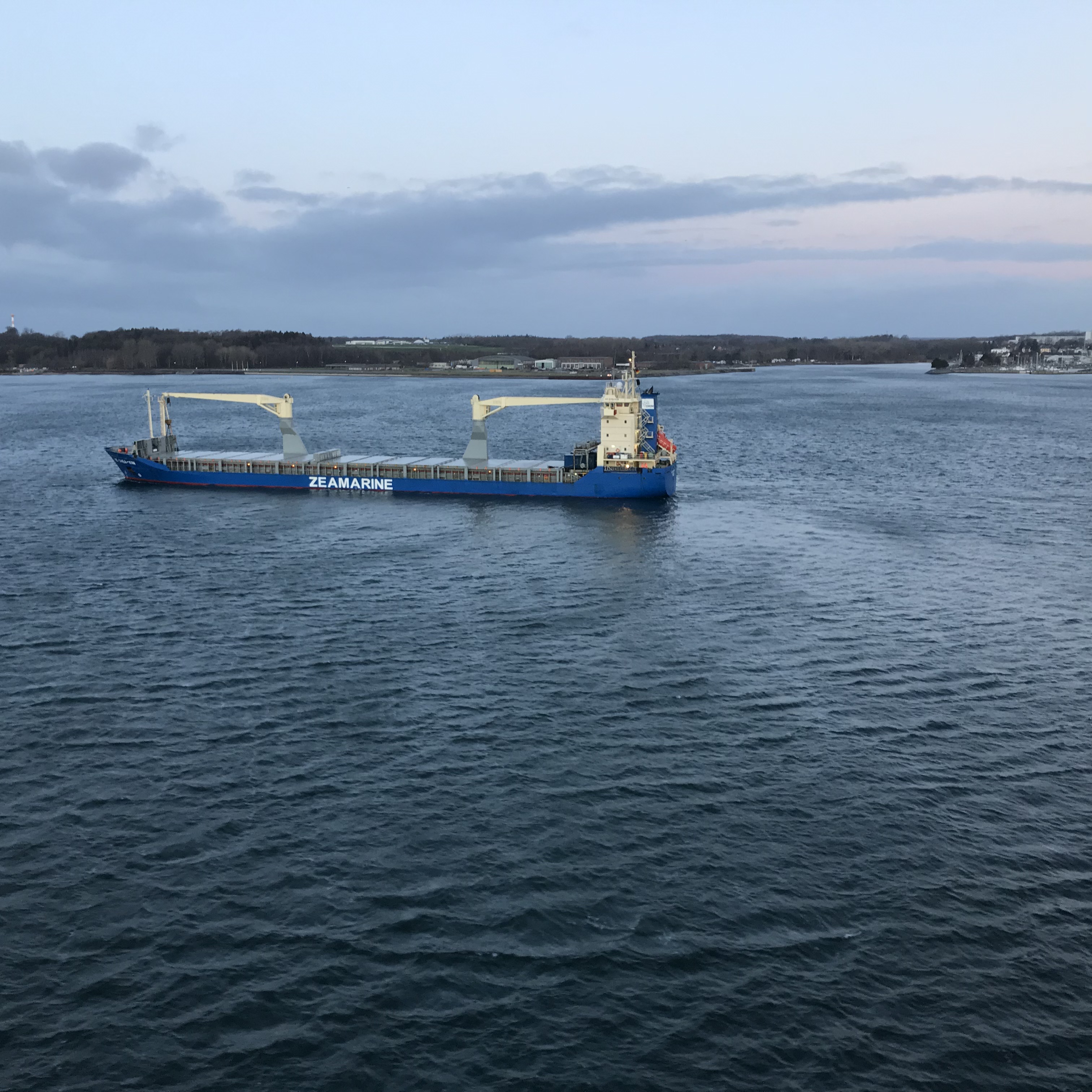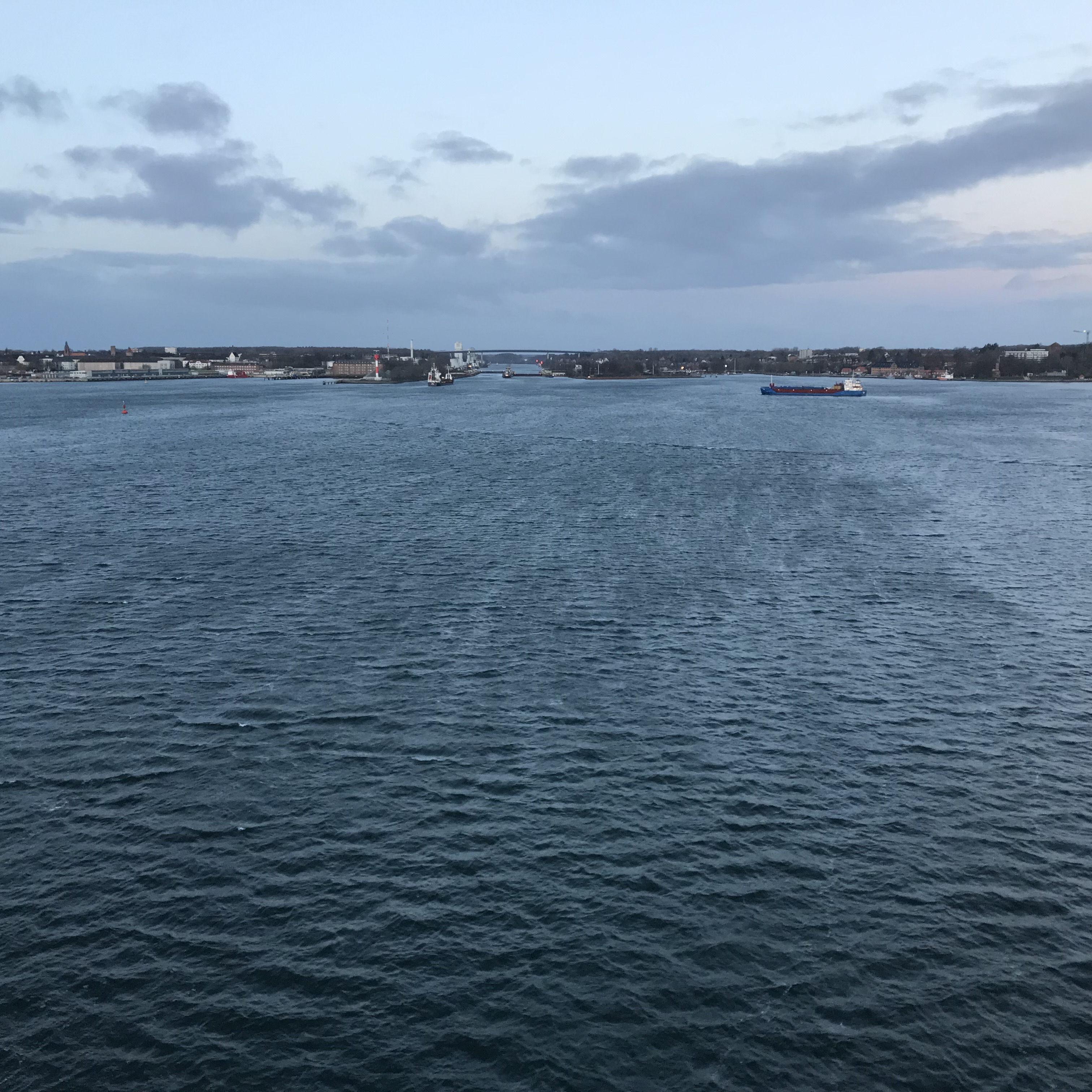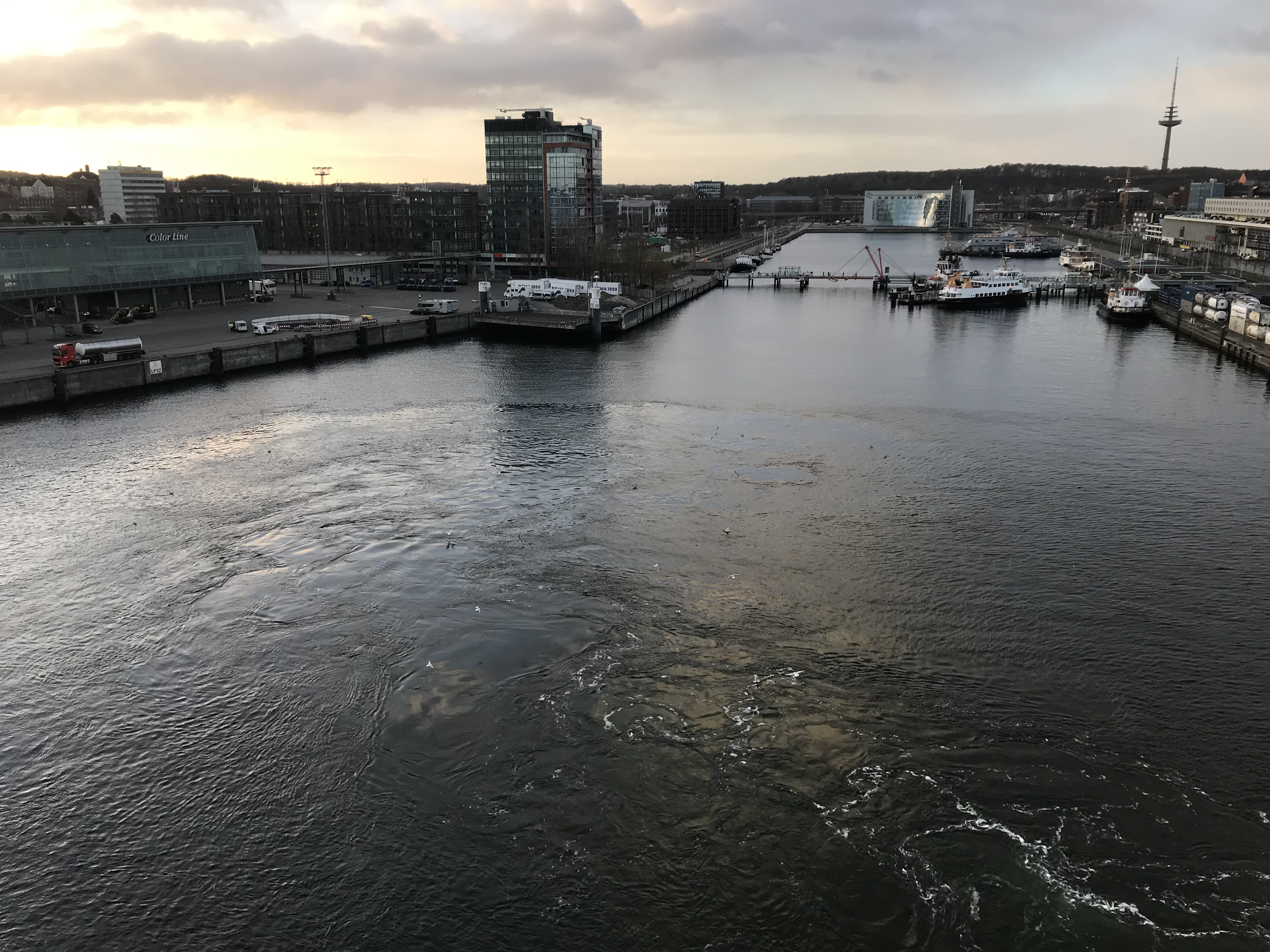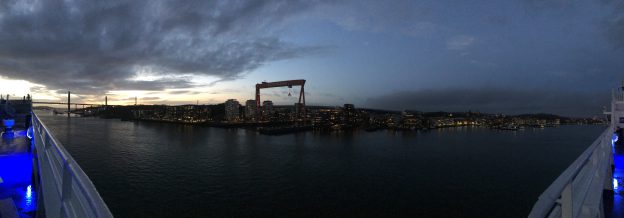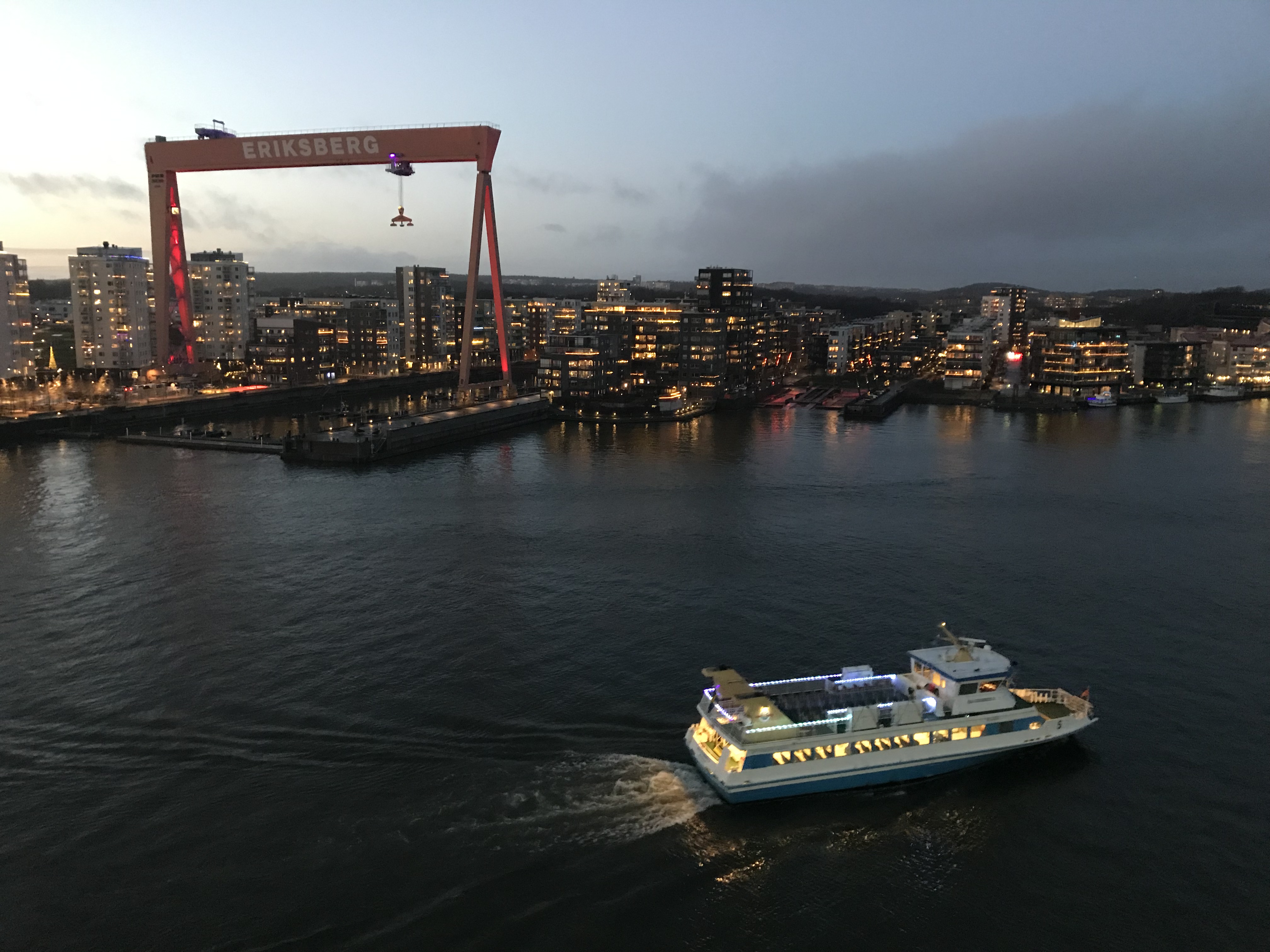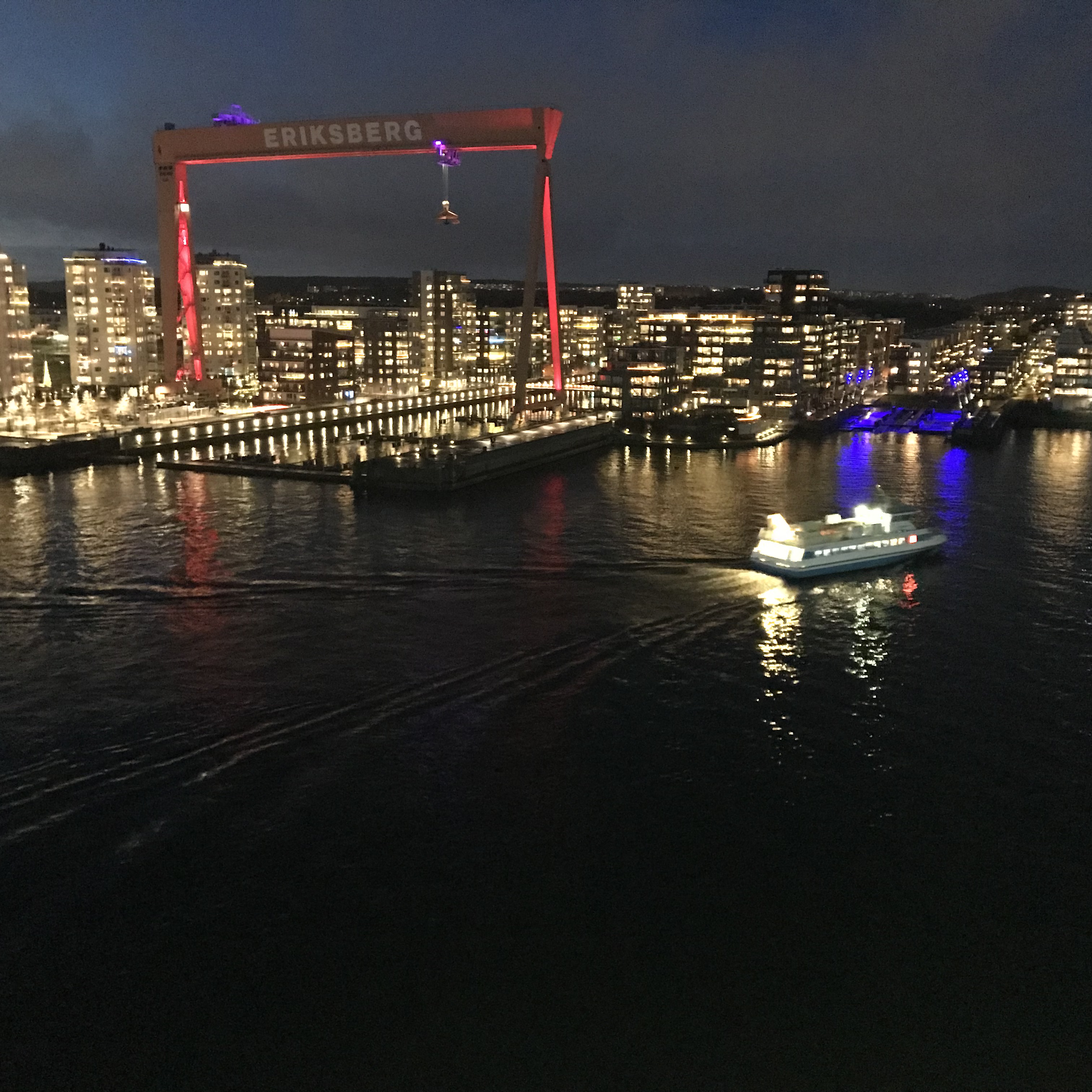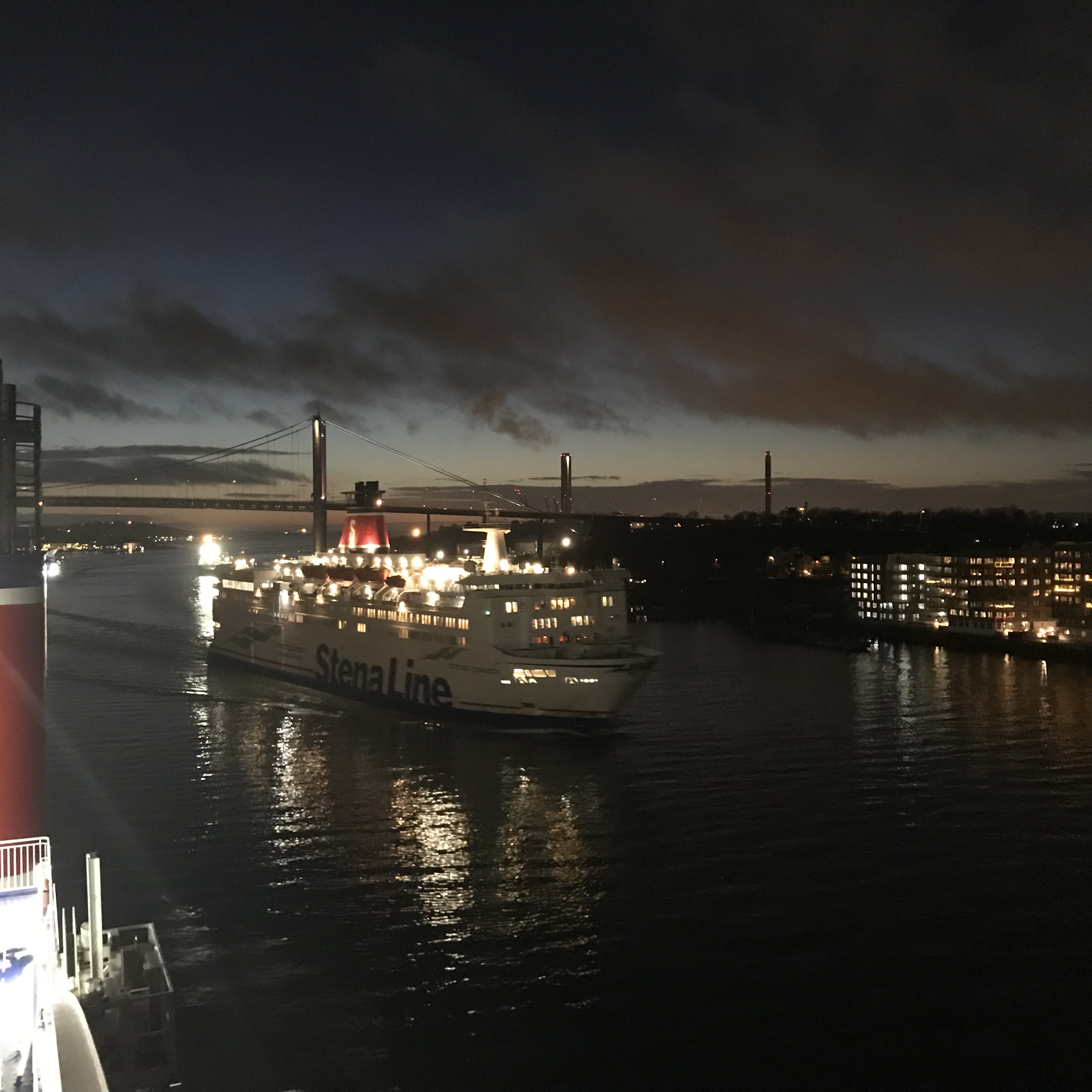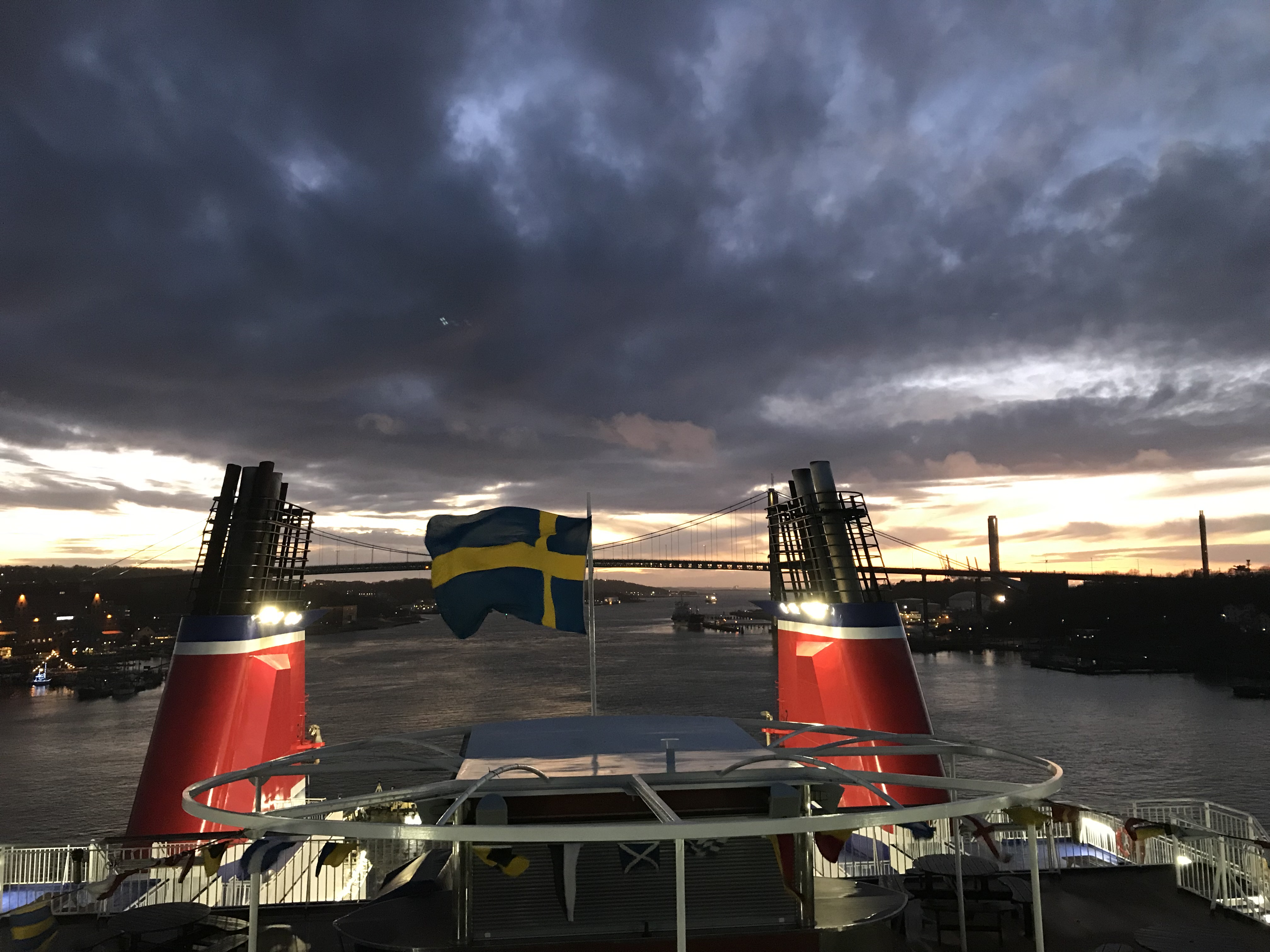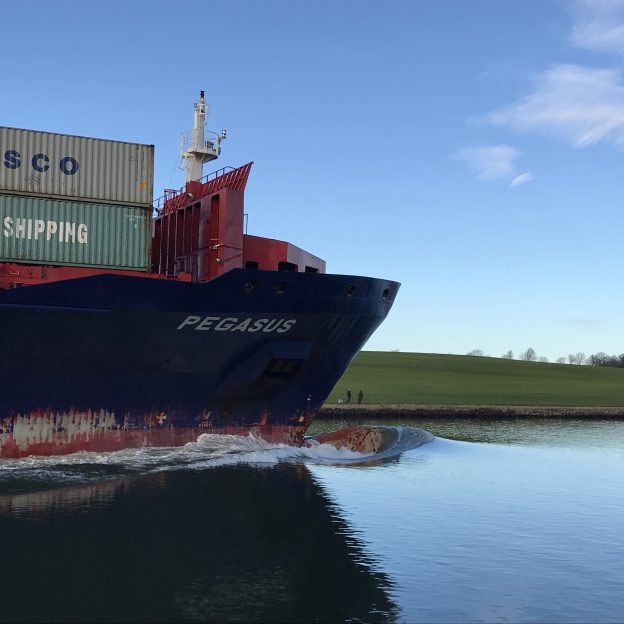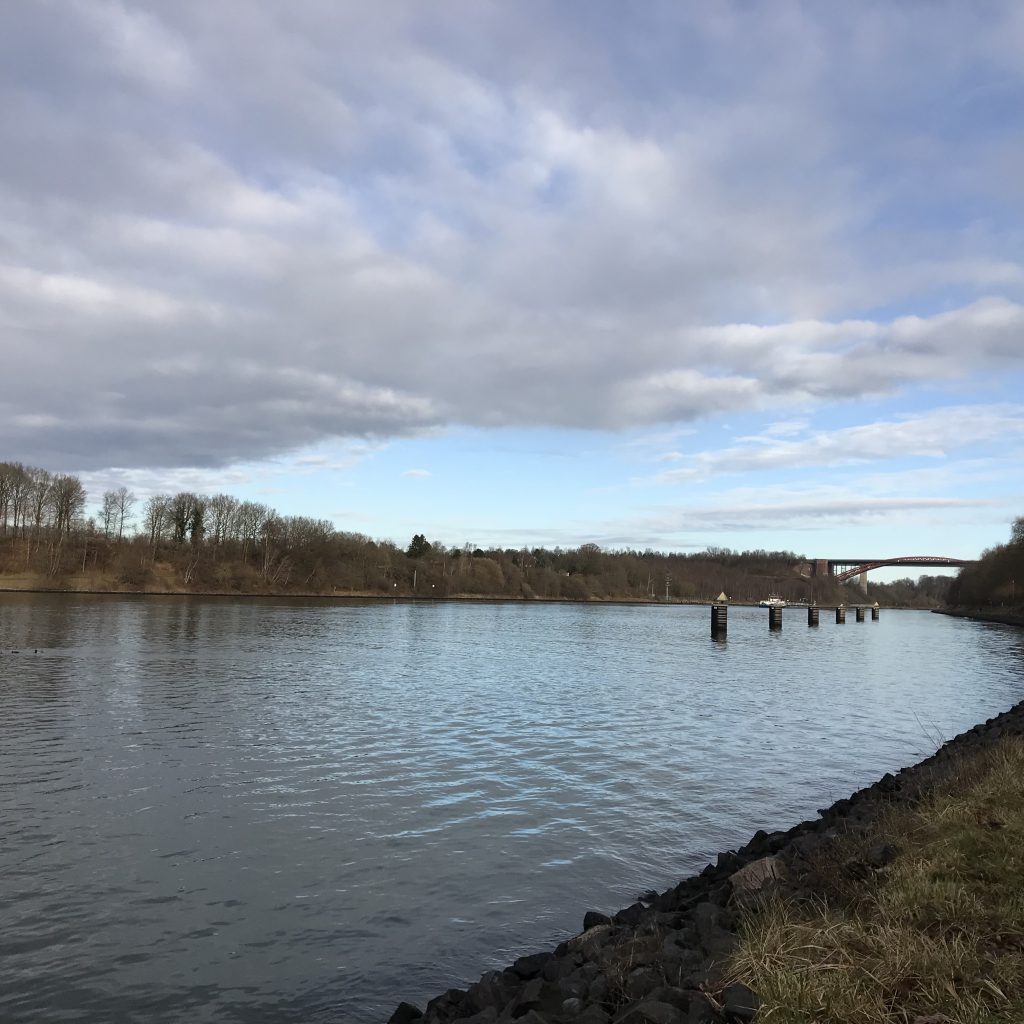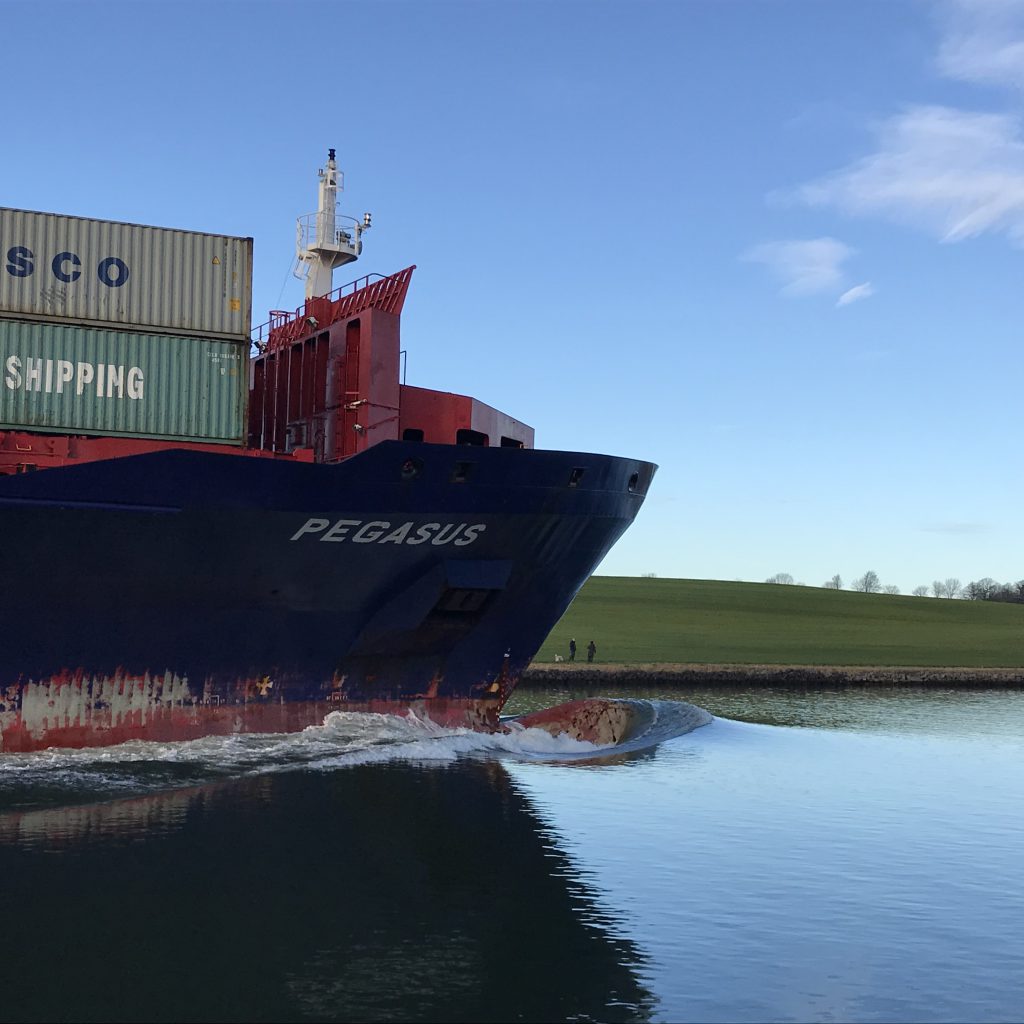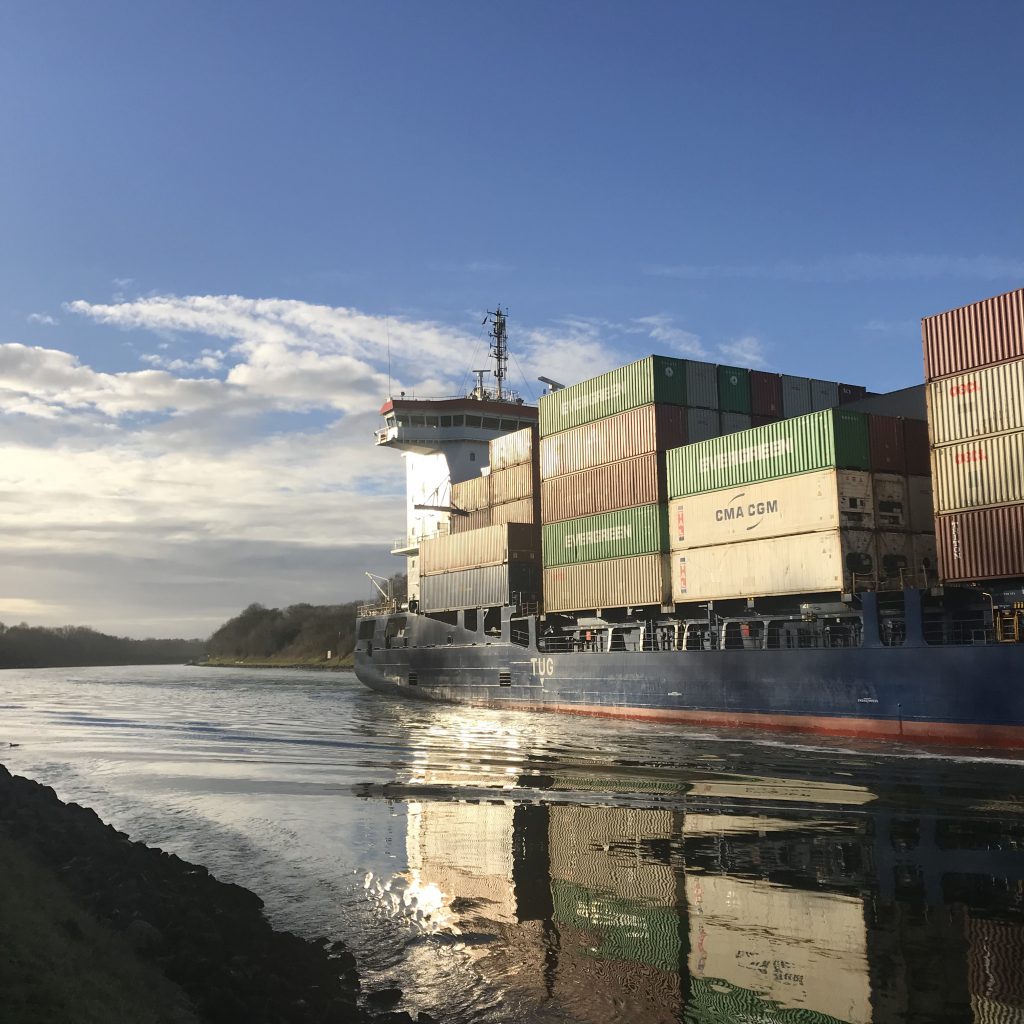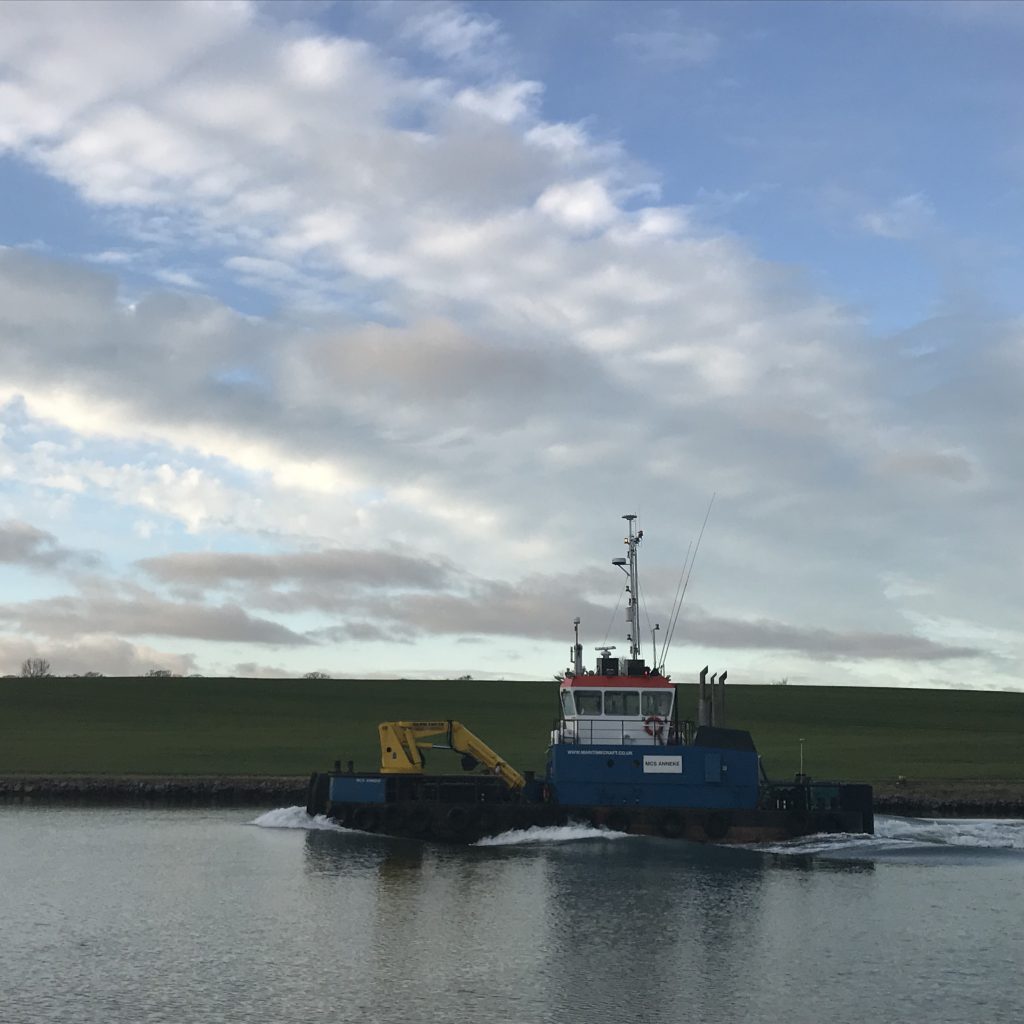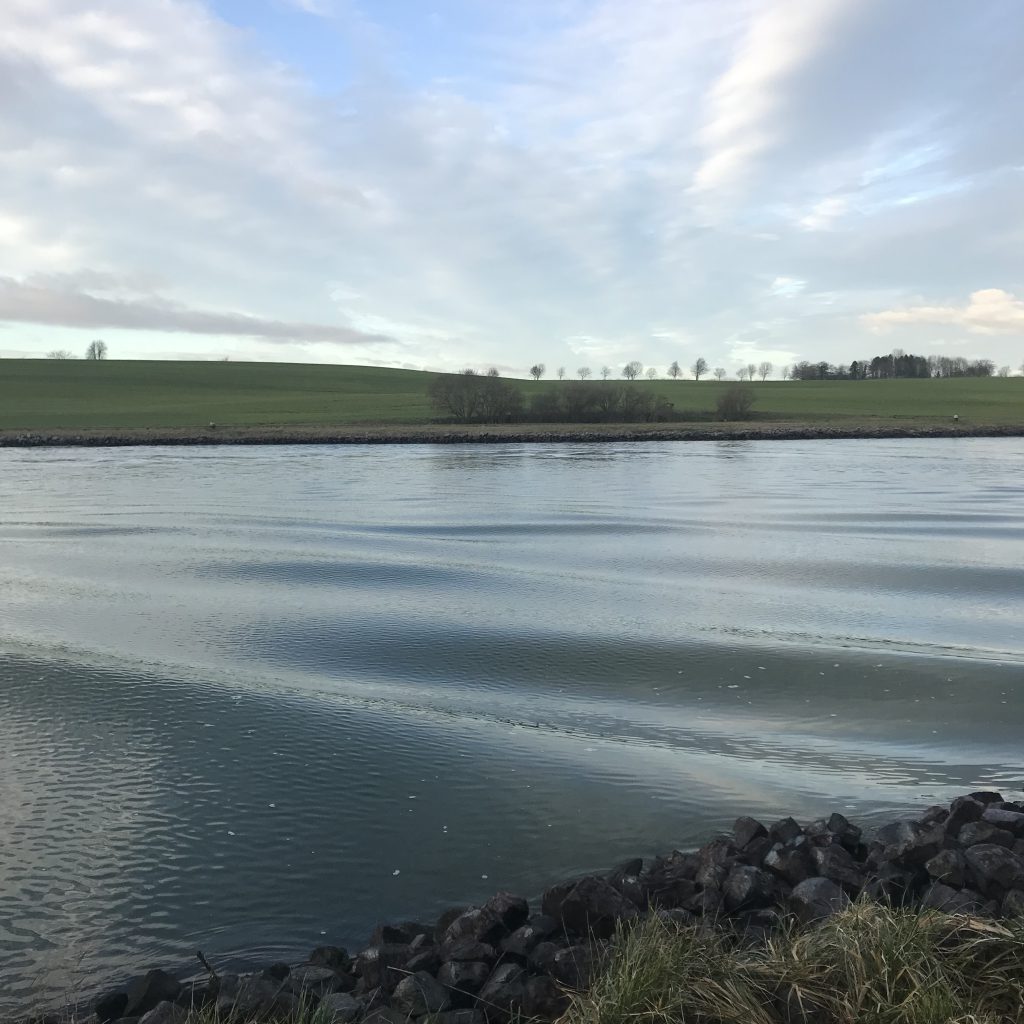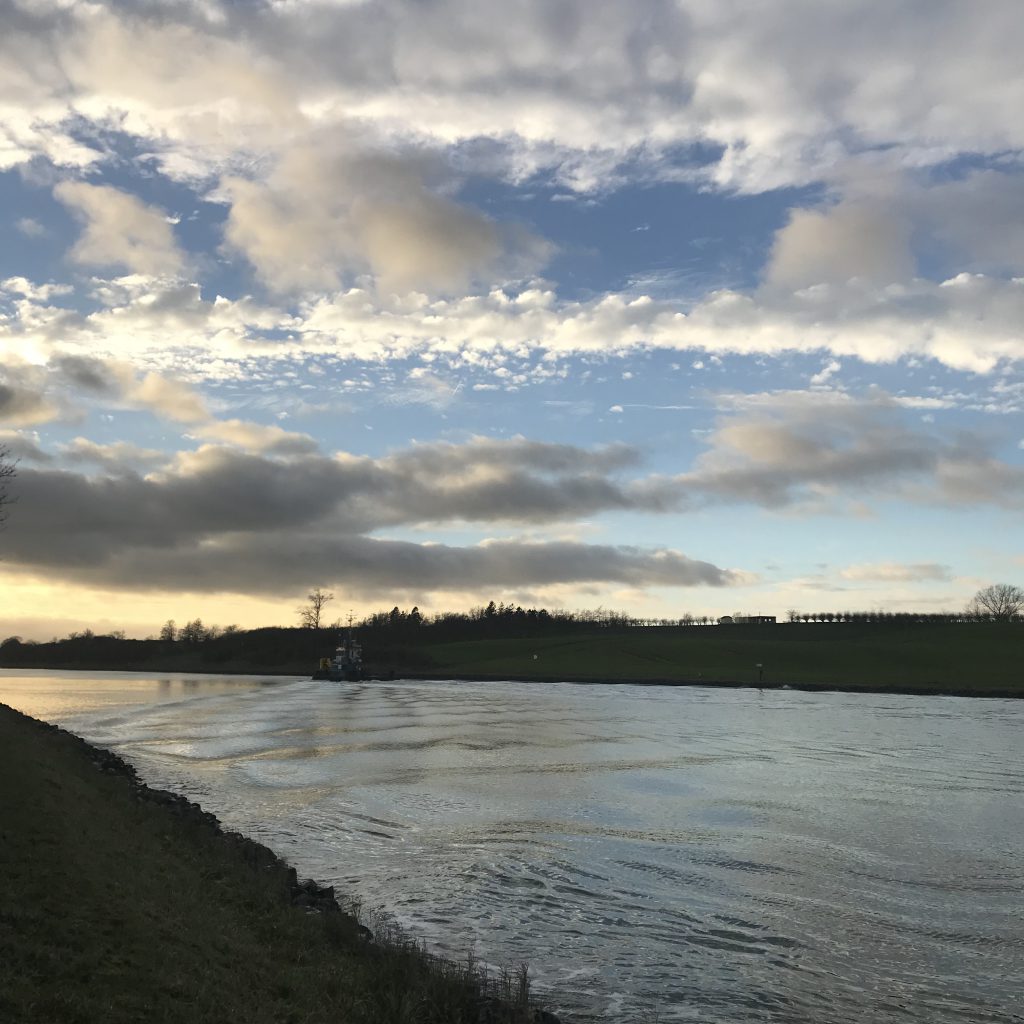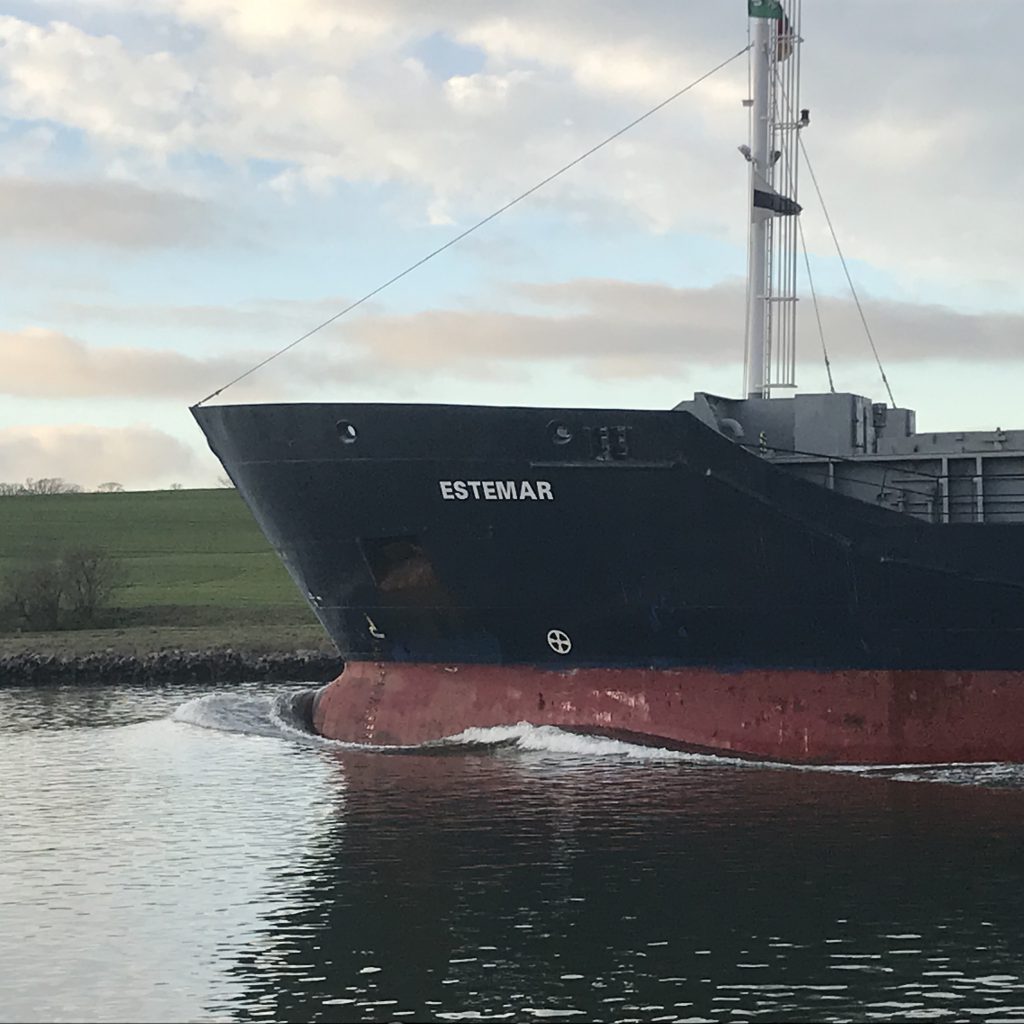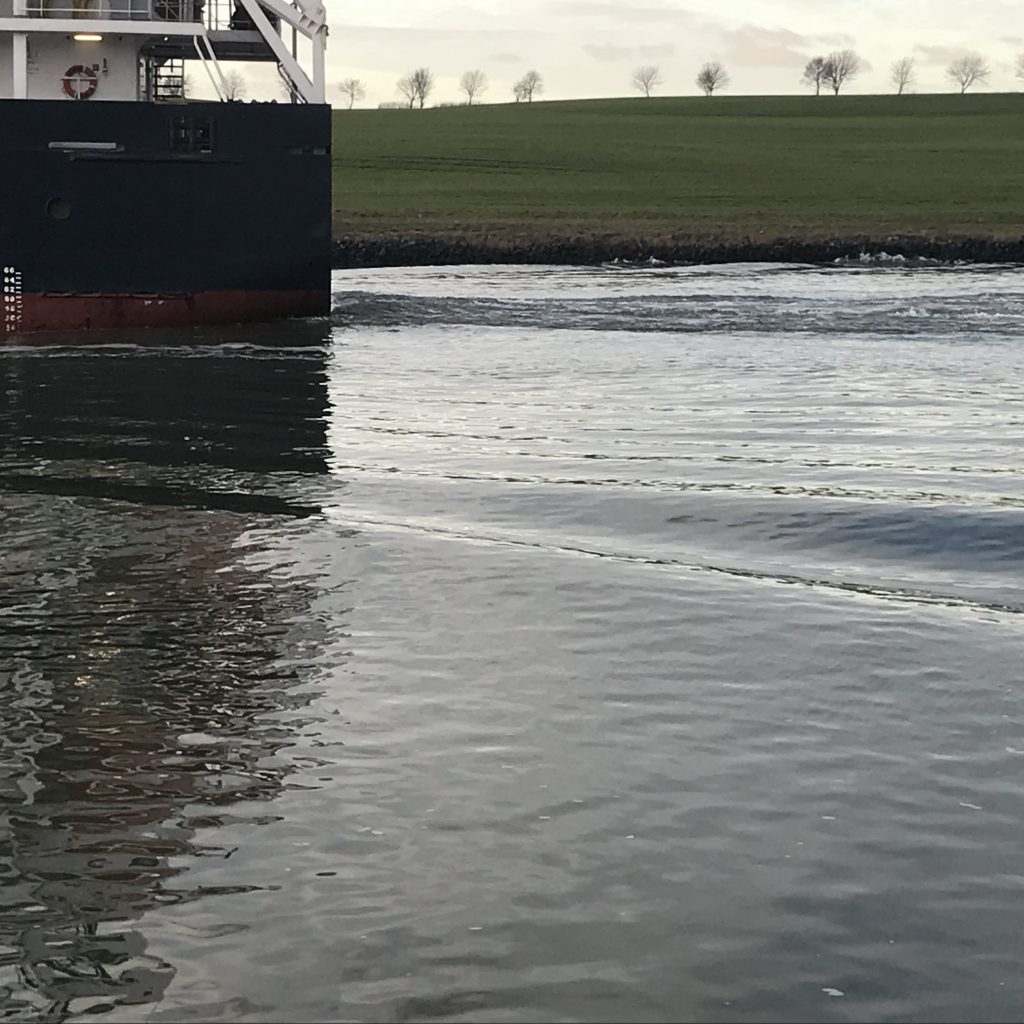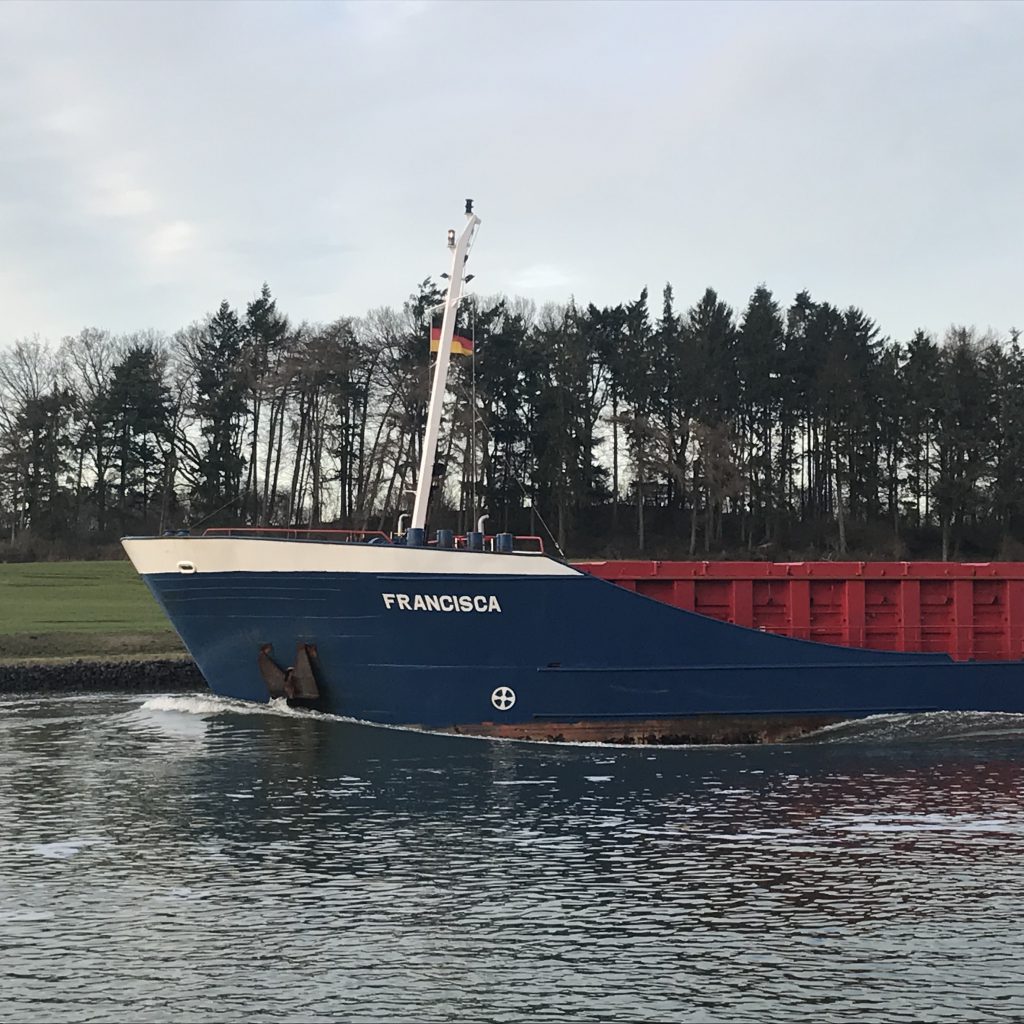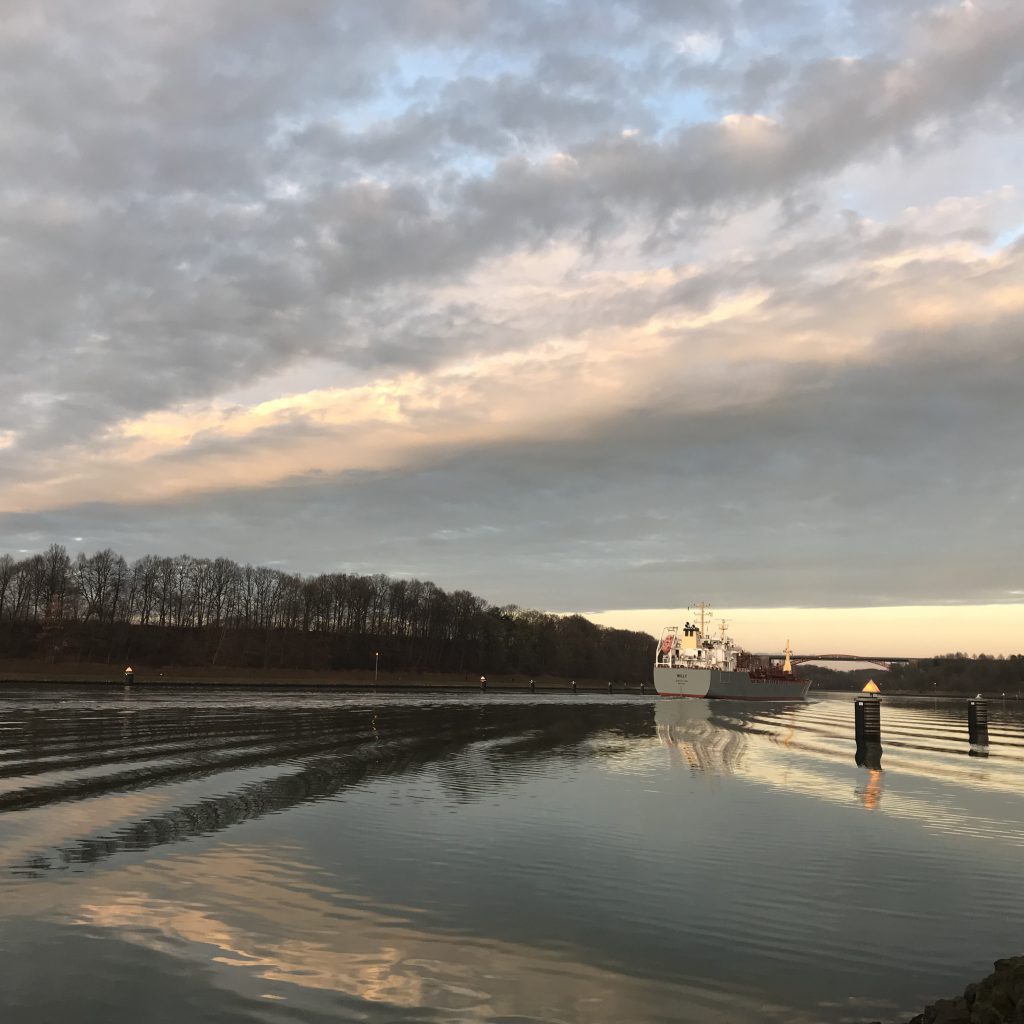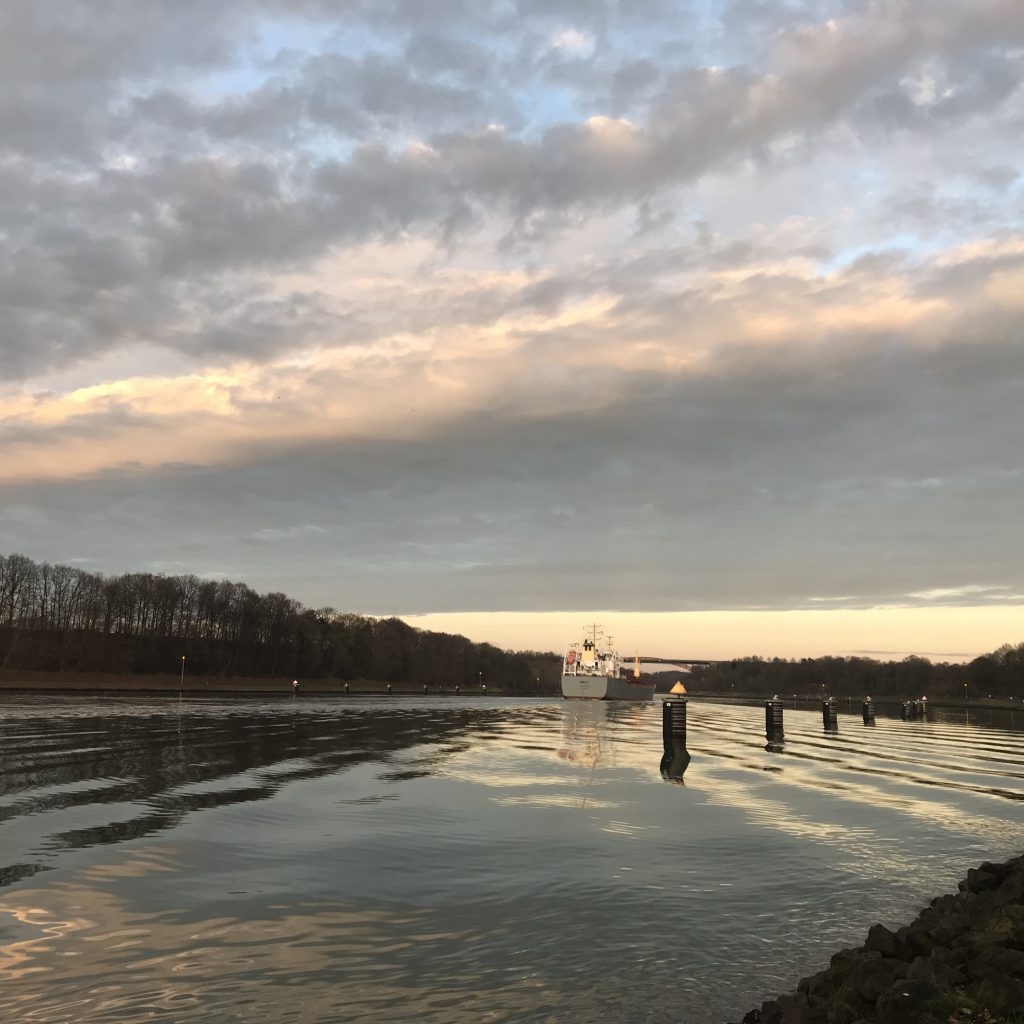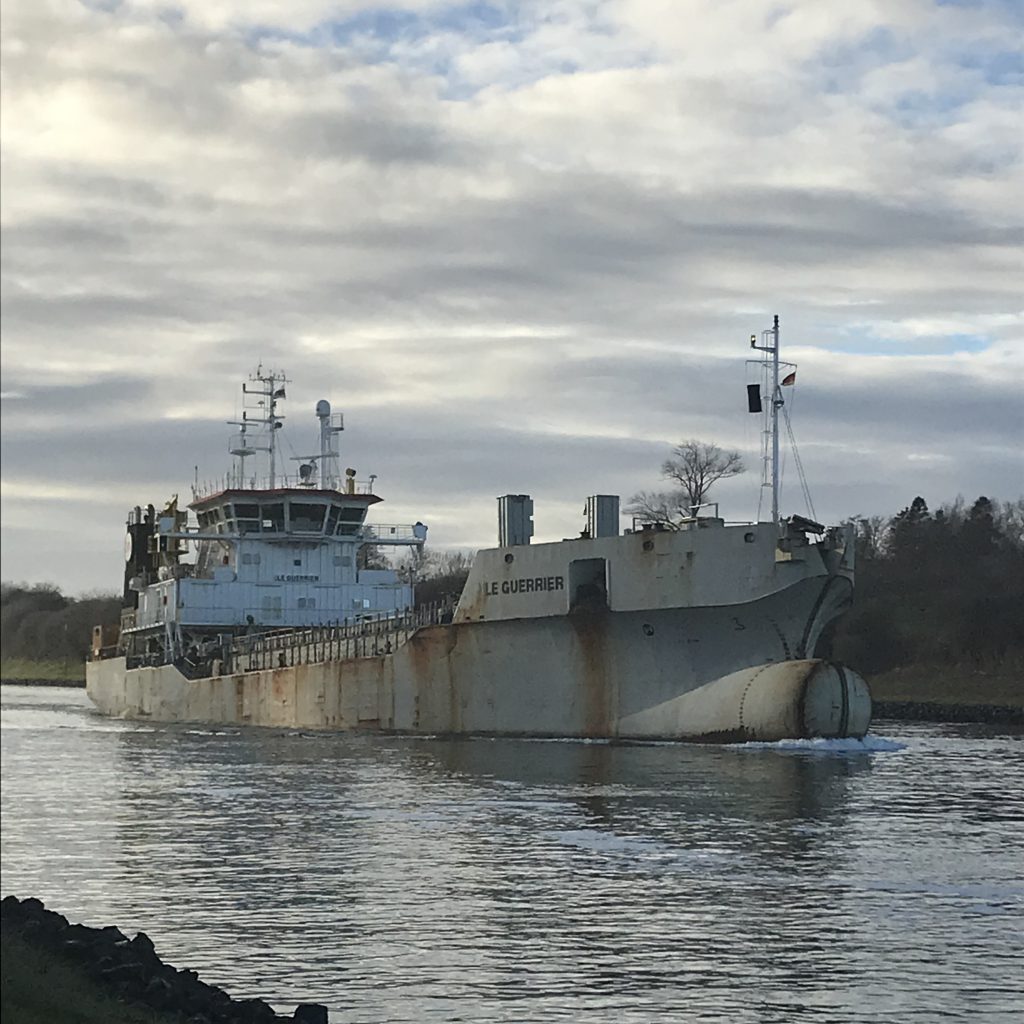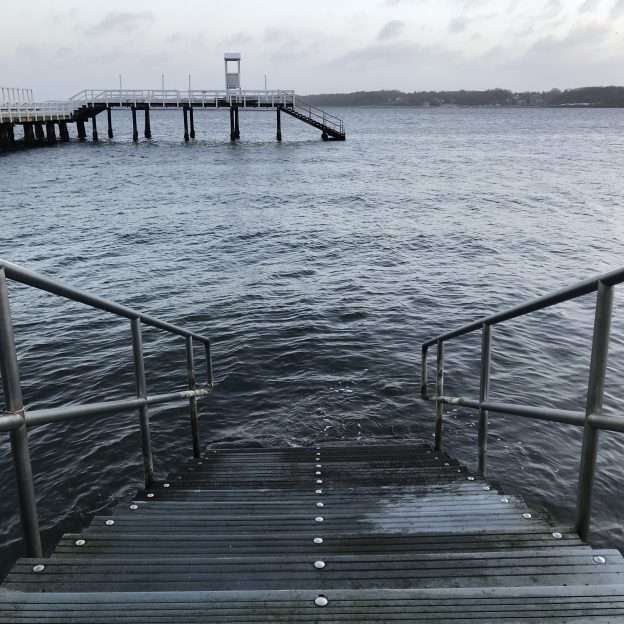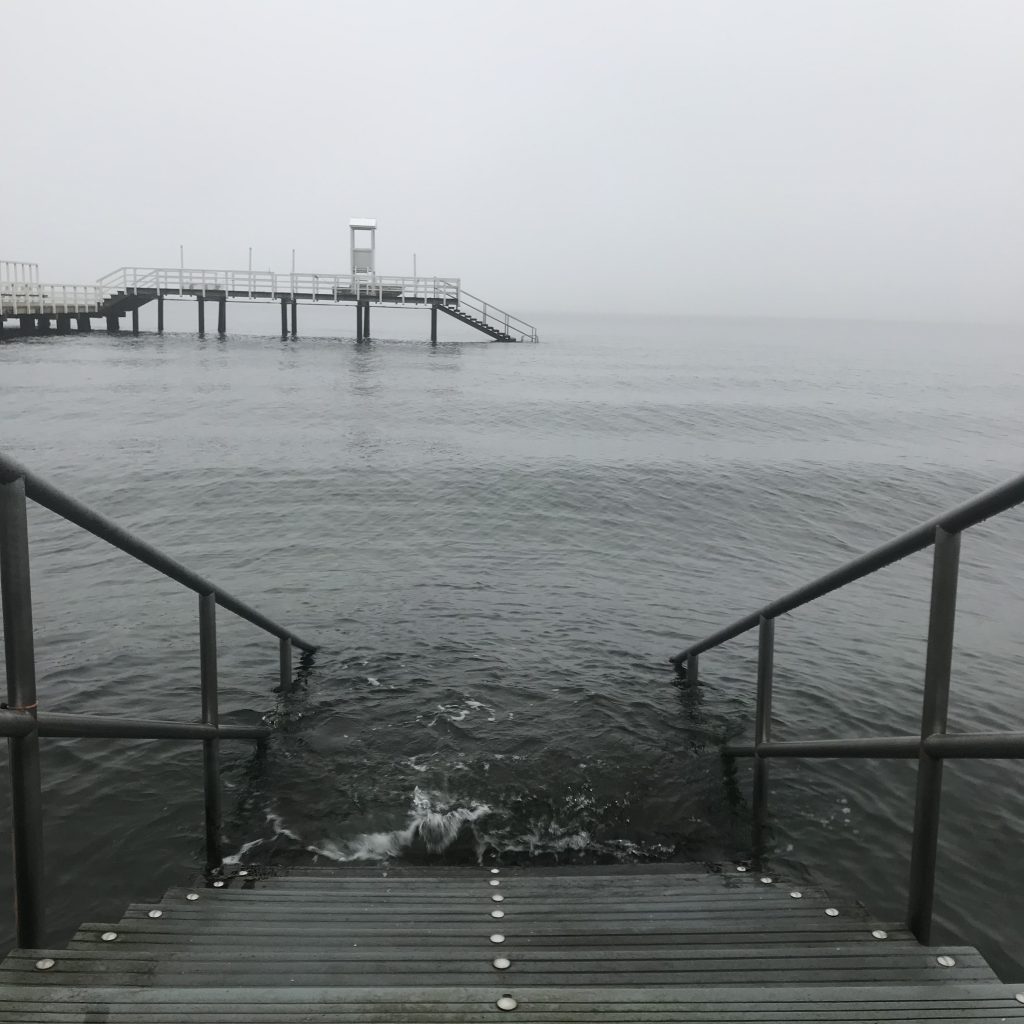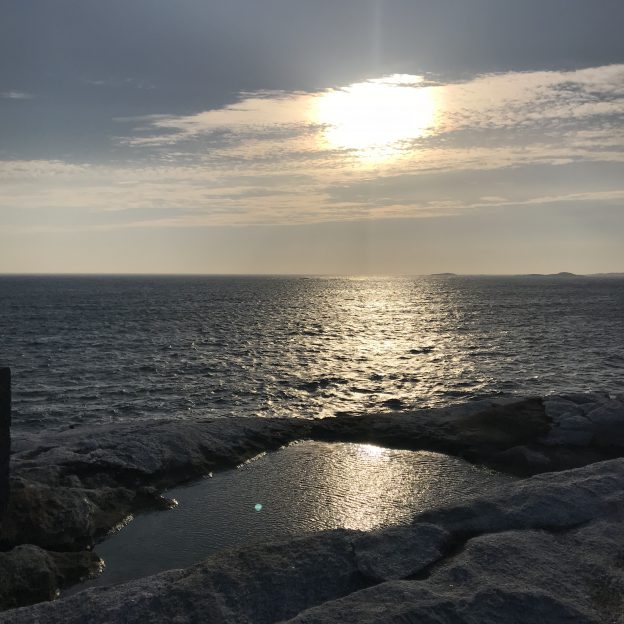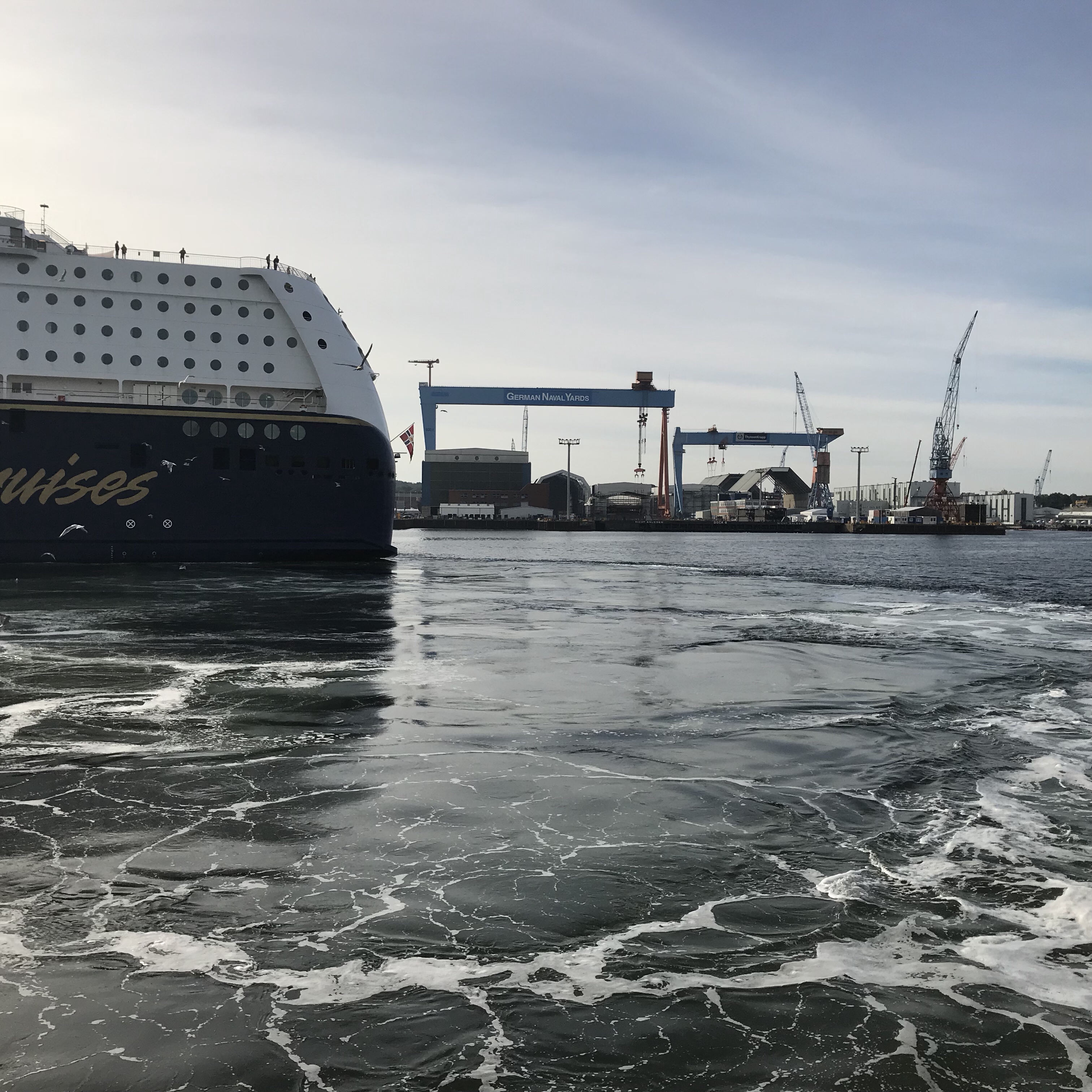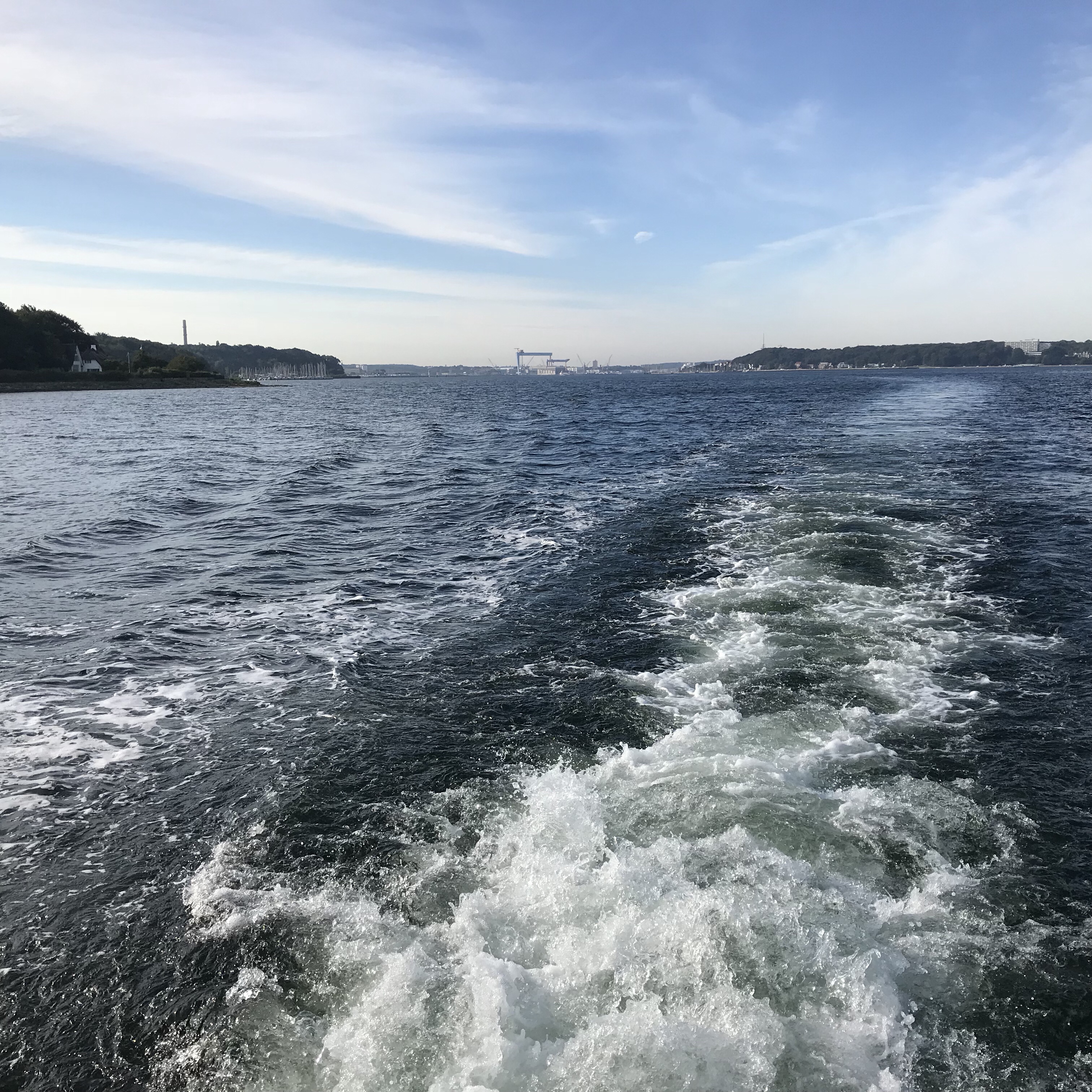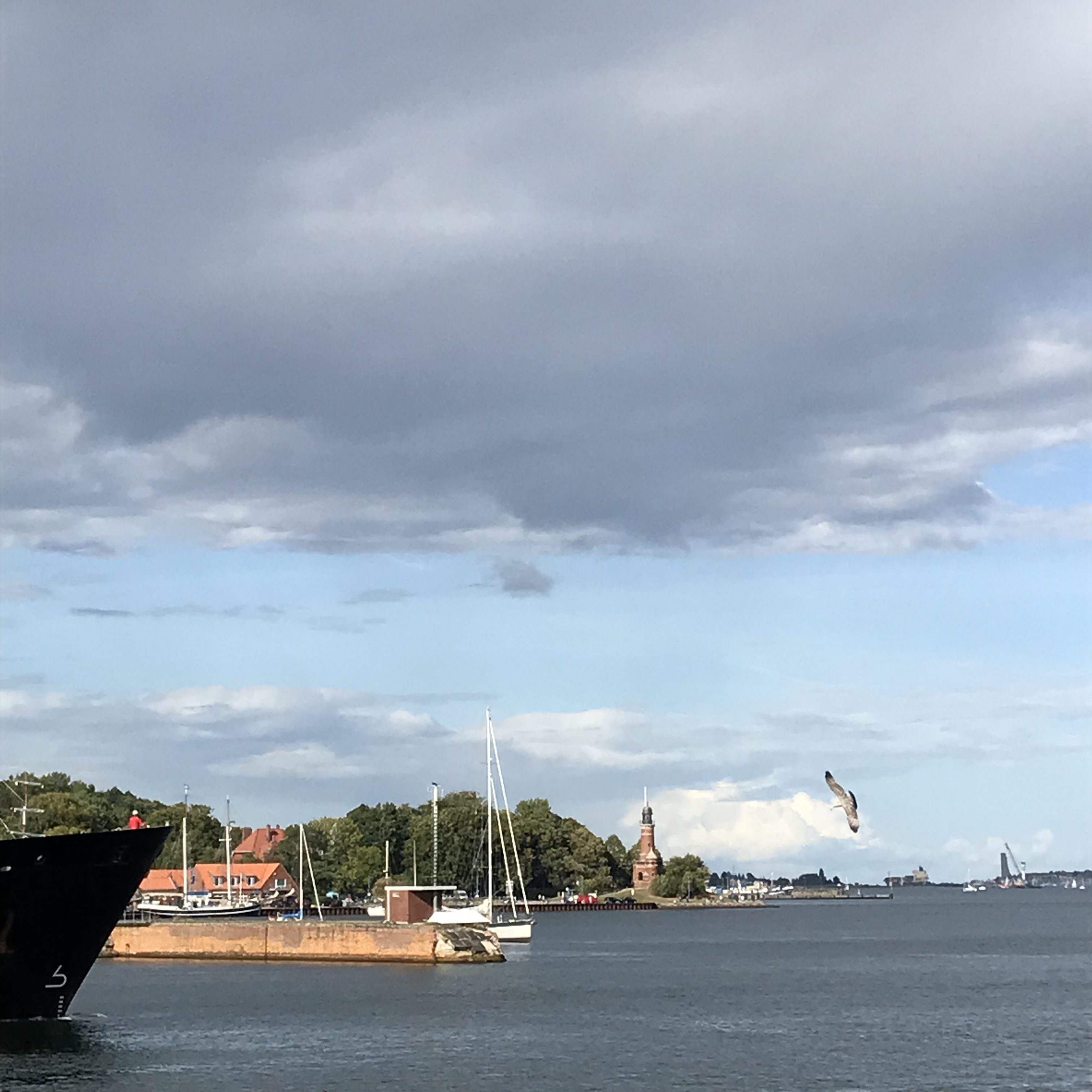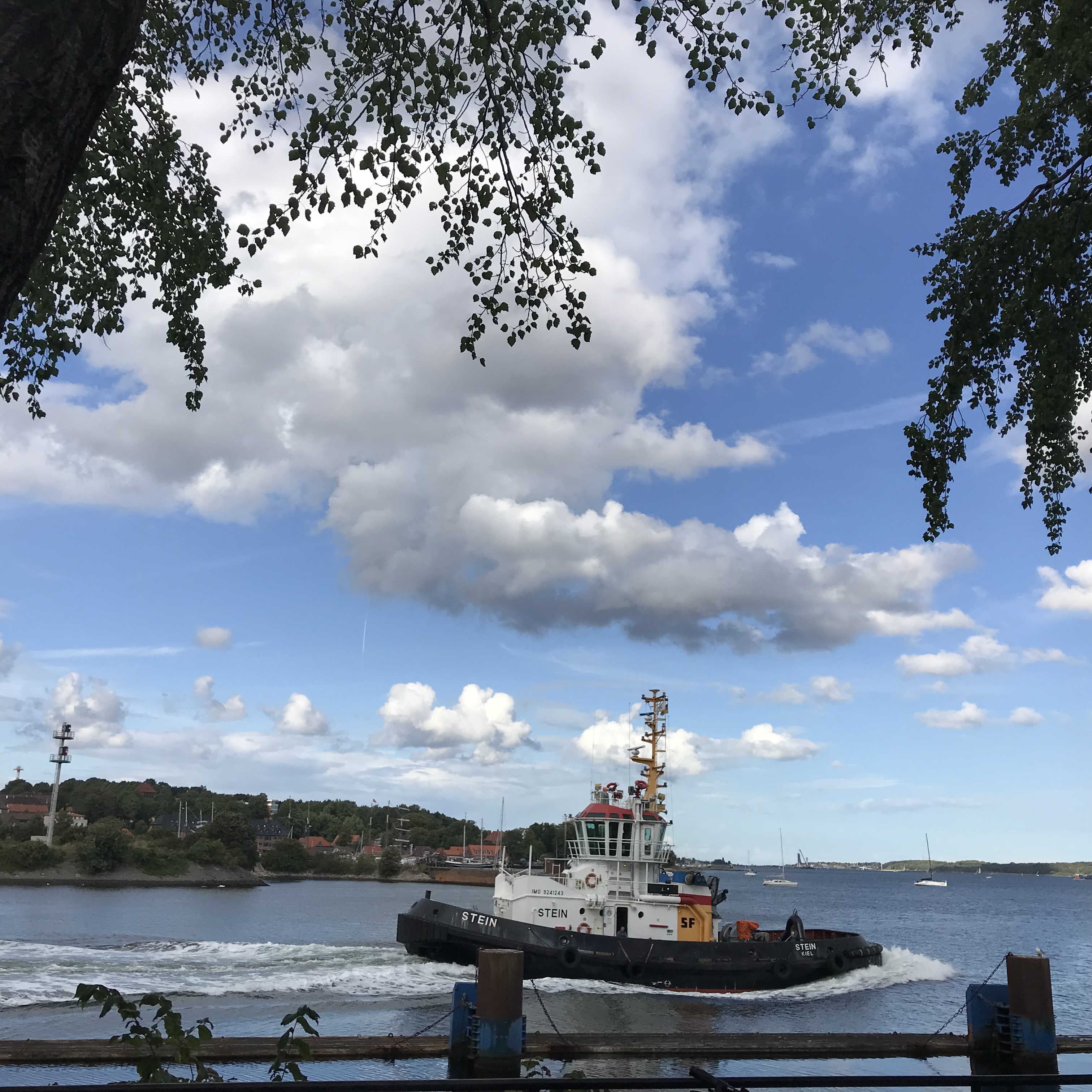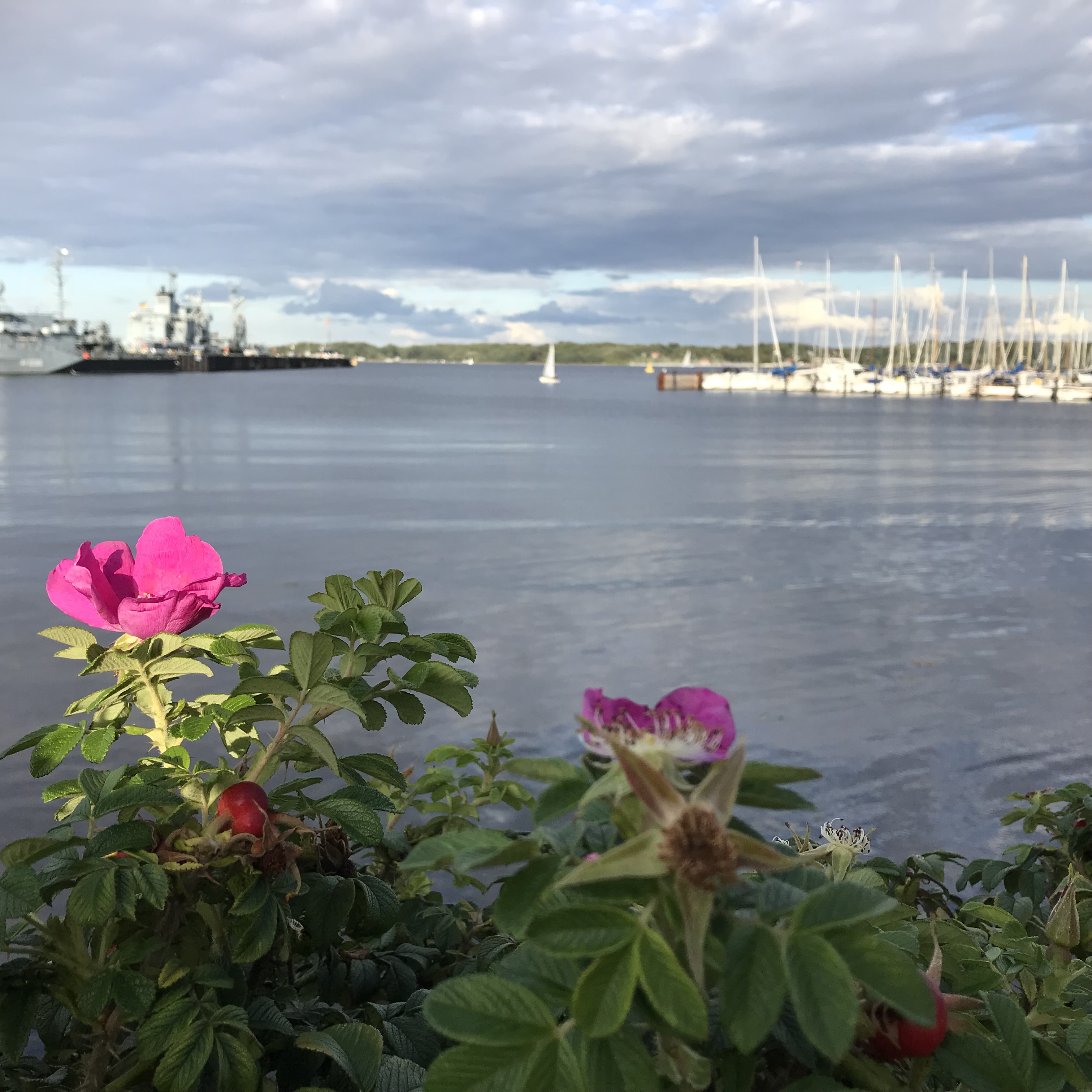Recently, more and more of my friends send me pictures of waves they spotted when walking along a lake side or taking a ferry ride. I love how contagious wave watching is, and I love sharing my fascination with you! :-)
Here are some pictures that Fred sent me of his lovely Sunday walk today. There are at least five interesting things that I notice in the picture below. How about you?
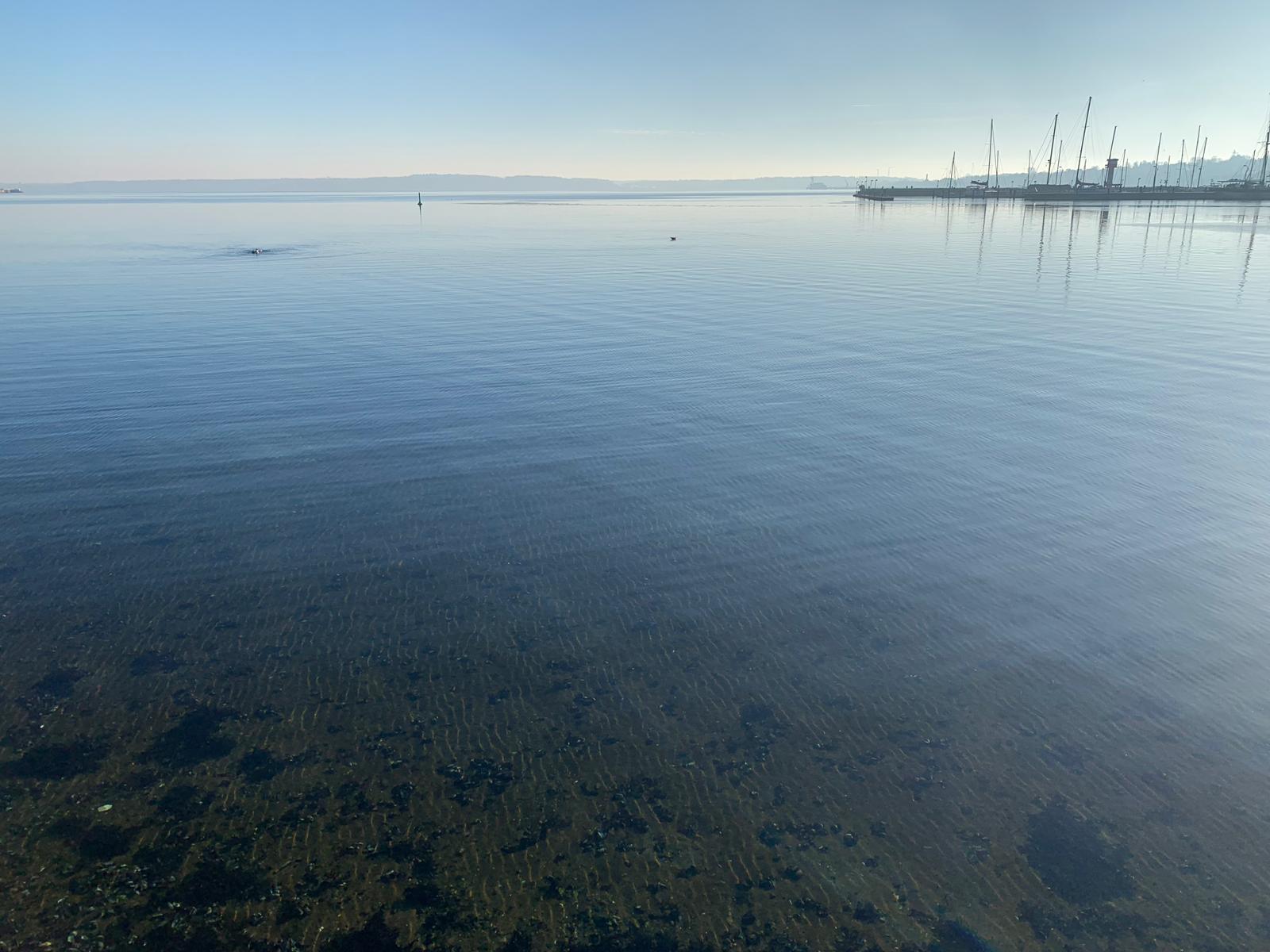
- Look at the beautiful interference pattern where two wave fields are almost perpendicular to each other, creating the checkerboard pattern! As you see in the picture below, there is one wave field coming in at a 45ish° angle to the sea wall, so its reflection is at 90ish° to the original wave field.
- In the background you see the surface roughness changing and the water seeming darker where there is a breeze going over the water, creating small ripples that reflect the sky in a different way than the smooth surface closer to us.
- See the waves the seagull made where it landed on the water?
- Looking at the foreground, do you see the tiny ripples that show up not so much on the surface of the water, but rather at the sandy ground, because they focus the light?
- And notice how you can look into the water in the foreground but not in the background? That’s the awesome phenomenon of total internal reflection where, if you look at water at an angle that is smaller than a critical angle, you cannot look into the water any more but just see light reflected at the surface! One of the things I never understood we had to learn about in school, but that I find super cool now.
And in the picture below, what do you see?
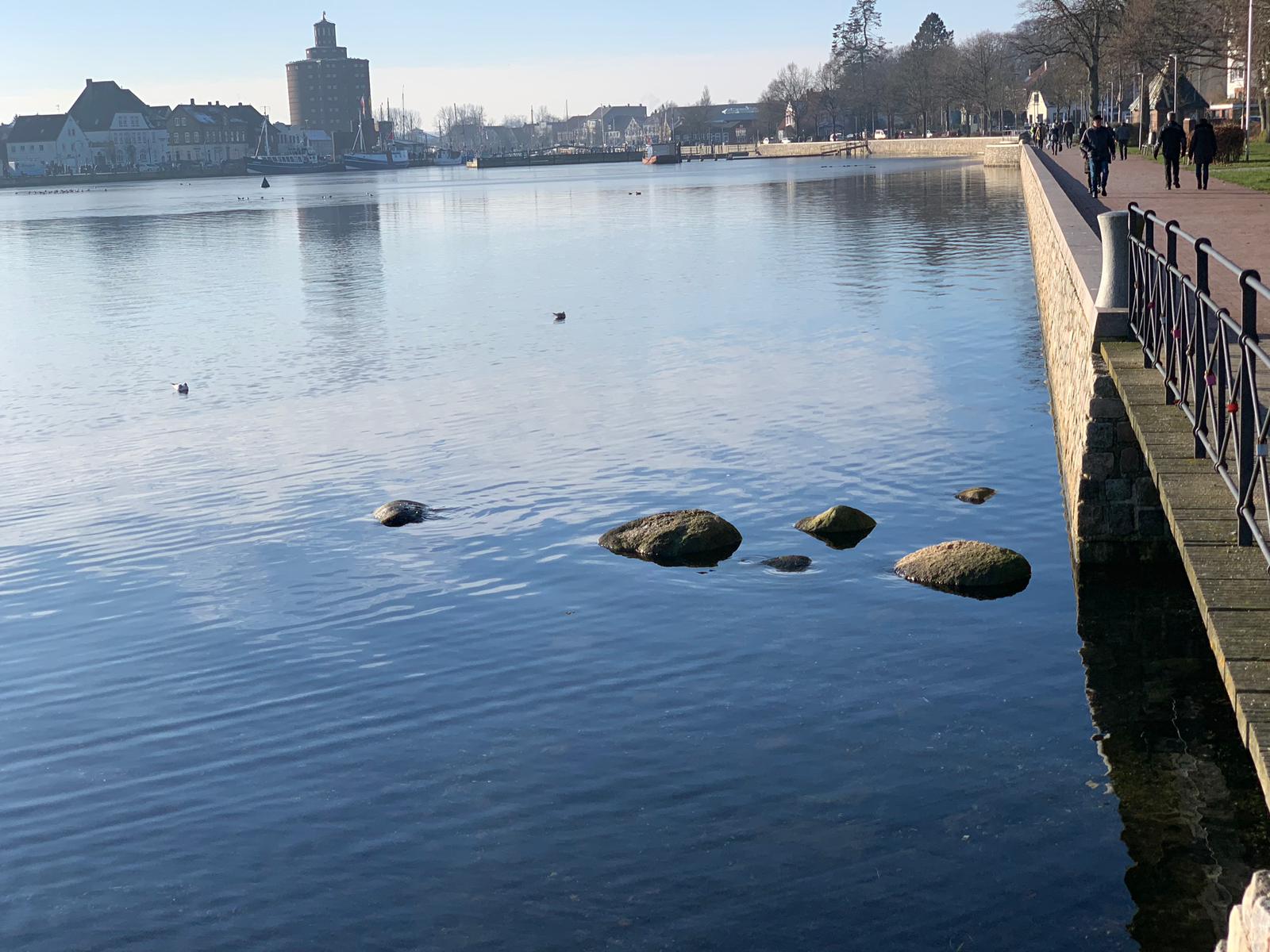
What I find most interesting in the picture above is how the reflection of that storehouse tower looks different in areas with different surface roughnesses. Where there is a breeze on the water in the background and in the foreground, it’s a lot more spotty than in the calm and smooth surface in between. And the checkerboard waves pattern (now you see the seawall that created the reflection, btw) carries through to the reflections, too, with the blue crisscross going into the white area where a cloud is reflected.
And then the phenomenon of total internal reflection is really clearly visible here with a lot of reflections on the water (or just more interesting things to reflect than just a blue sky in the previous picture) and a view down to the ground only in the very foreground of the picture.
Thanks for sharing these beautiful pics, Fred!
